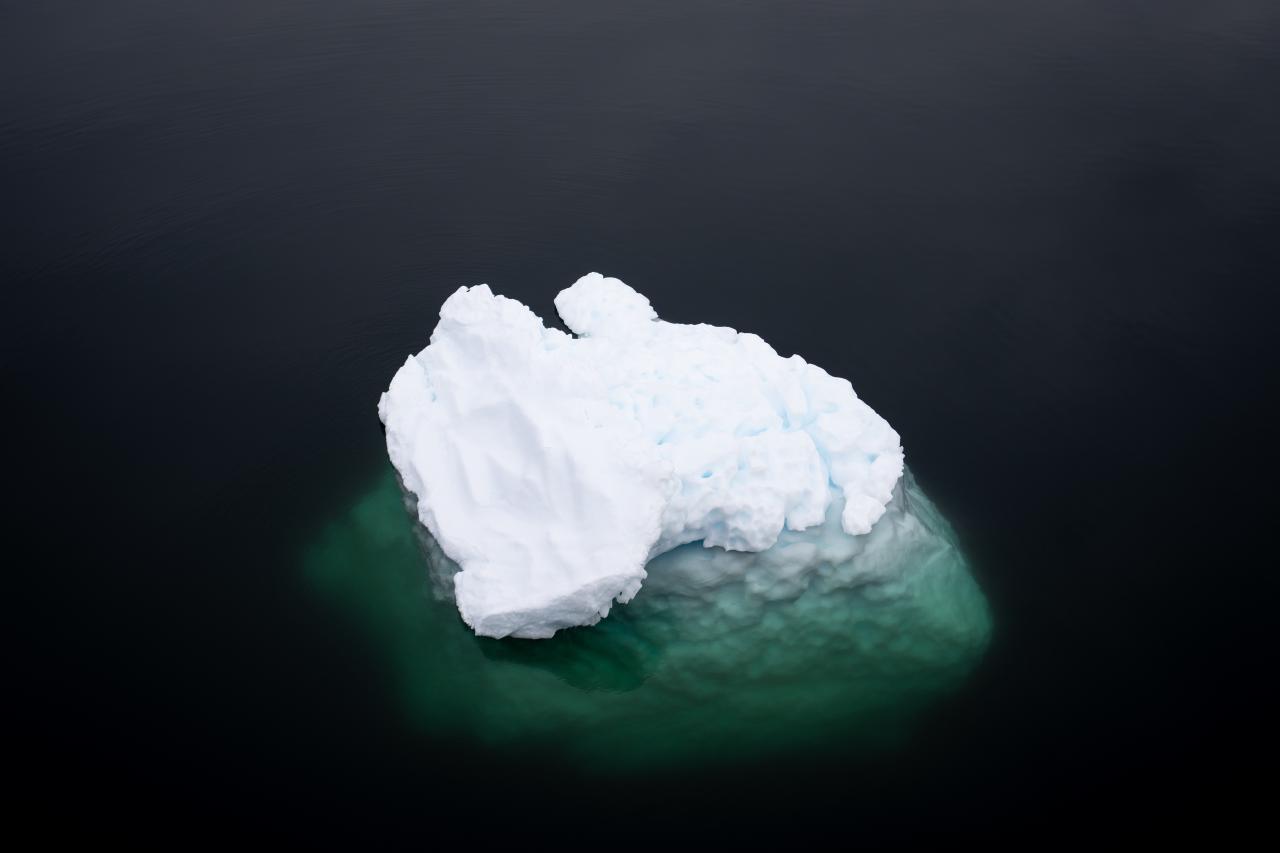Antarctica is truly the continent of superlatives. It is the coldest, driest, windiest, highest place on earth. It is a place of unimaginable beauty. During one half of the year, in the polar winter, it is a frigid landscape submerged in total darkness where nothing but the most extreme and hidden forms of life remain. But then, during the other half of the year, summer arrives, and with it, light. Through this oscillation between the seasons, a dynamic process of freezing and thawing transforms the continent and its surrounding seas.
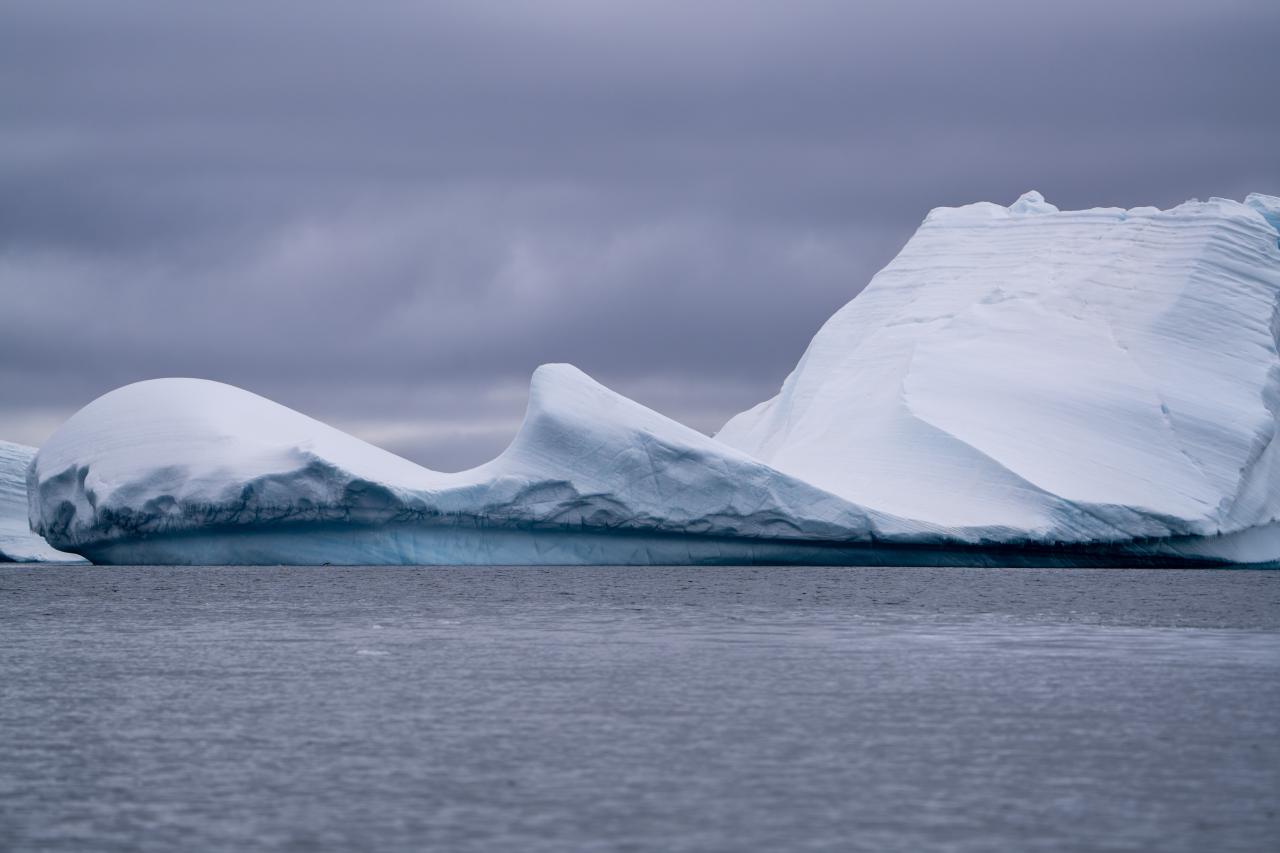
Breathtaking ice sculptures at the Antarctic Peninsula
During the antipodean summer, life flourishes and millions of birds and marine mammals migrate to the southern waters to breed in and around the remote land masses surrounded by the cold, nutrient rich Antarctic waters.
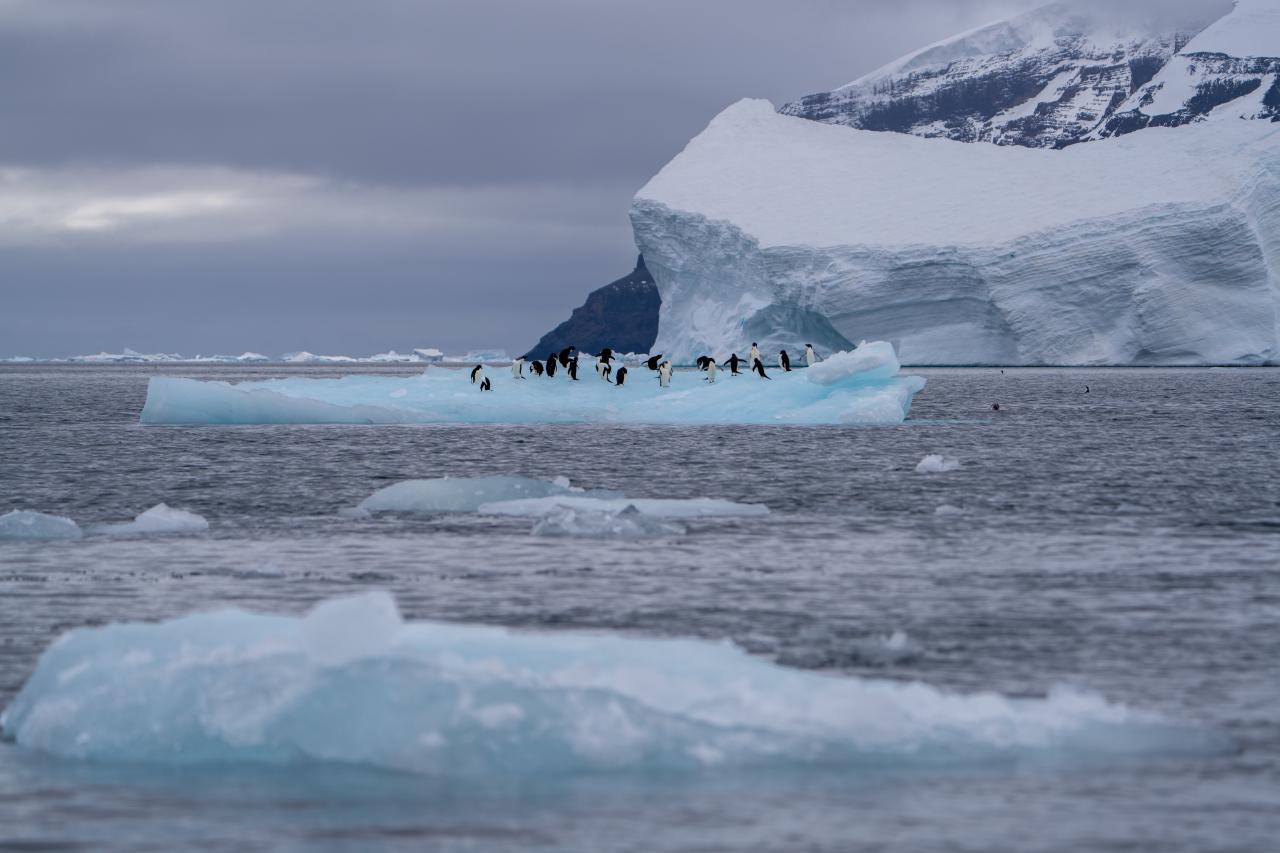
On our way to the Antarctic Peninsula, we sailed past the gigantic A80a. It is a 16km long and 13km wide iceberg; an area twice the size as Manhattan. Icebergs that are this large are named and tracked by the US National Ice Centre so that their positions are well known to ships. A80a calved from the Larsen ice shelf in November 2022 and has been floating around the Weddell Sea ever since, very, very slowly losing some of its enormous mass to the ocean. The size of this piece of ice was unfathomable, and it was not until we travelled past it that the true scale of it became comprehensible as the minutes kept ticking by as we slid progressively past the frozen white wall. It literally couldn’t fit within even the widest of angle shots.
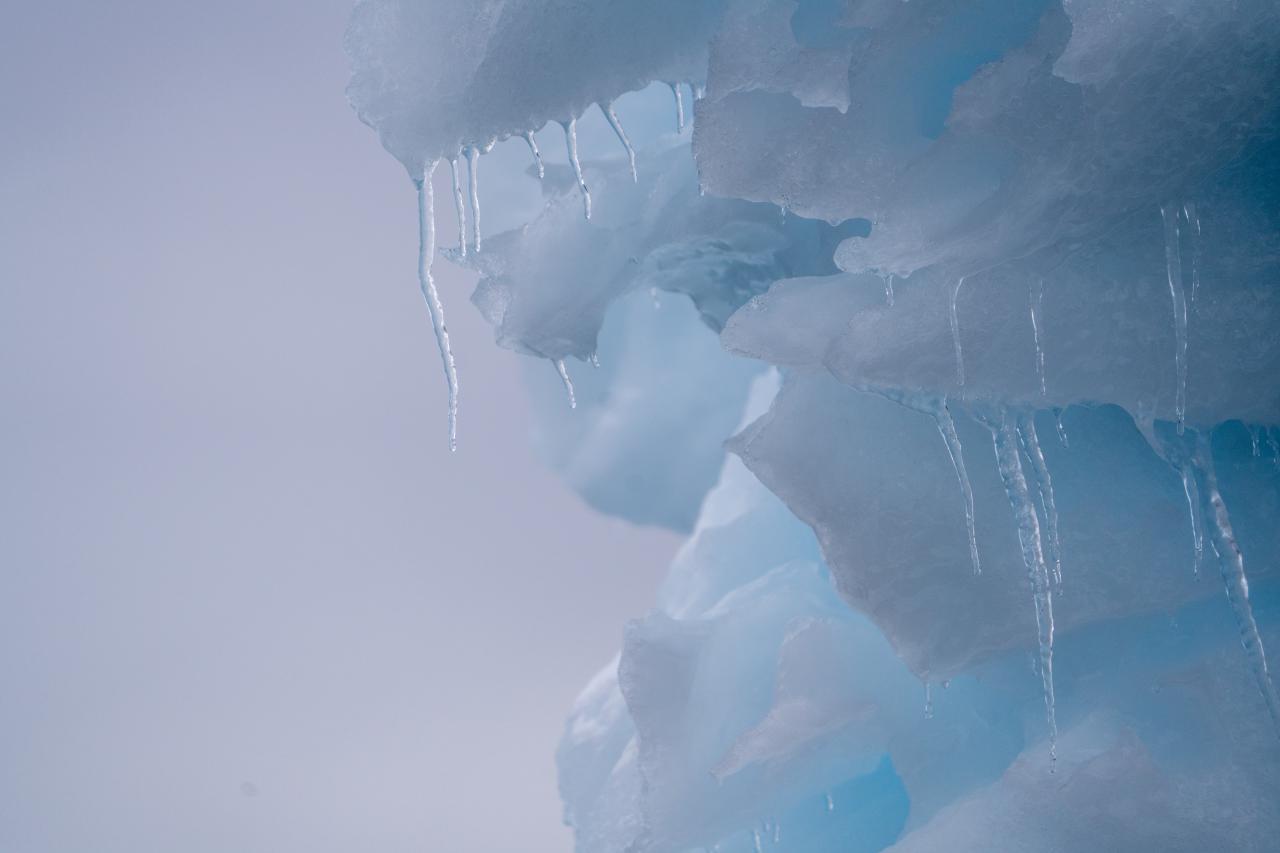
Antarctica holds around 60% of the world's total fresh water in its ice sheet
17 January, Tabarin Peninsula
We arrived on the eastern side of the Antarctic Peninsula in the waters below the peak of Brown Bluff in the early hours of the morning. There are generally less ships on the east of the peninsula because it is further to travel from Ushuaia, but since we had come from South Georgia, it was a natural continuation of our journey. In fact, during the five days we were there, we saw only one ship. Not a single tourist vessel or fishing vessel; just one lone research vessel.
In our now habitual fashion, we pulled back the light-blocking curtains after our early wake up call to reveal the stunning landscape of our newest location. We were surrounded by ice in all its frozen forms. There was a towering, frozen wall of glacial ice forming a precipitous cliff at the edge of the continent. An enormous iceberg, over ten metres high, sat off the port side of the boat. There were hundreds of thick ice floats, many of them dotted with penguins, suspended in the deep blue between us and the horizon. There were patches of barely frozen water forming thin sheets of clear ice, clinging on to the lingering chill of winter.
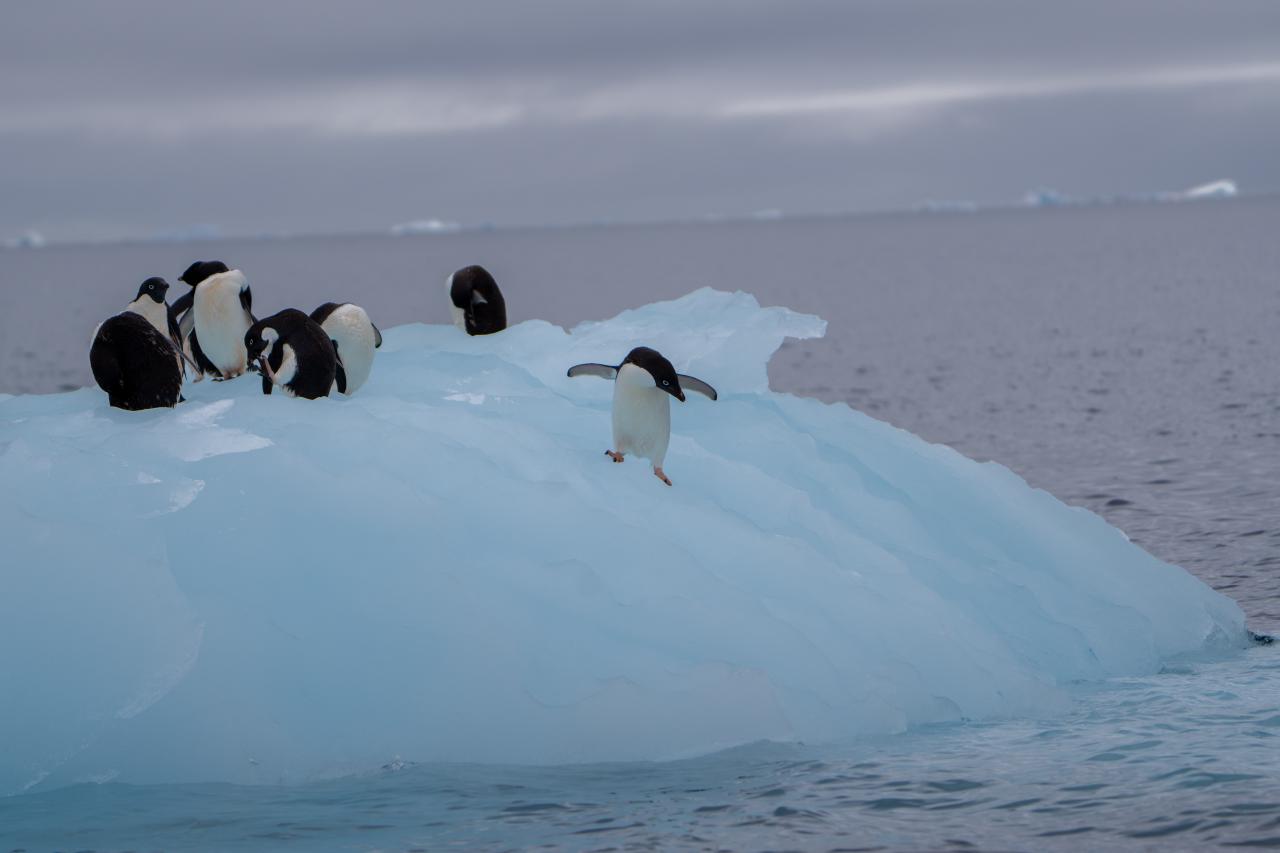
Penguins enjoying their ice float
We went on our morning zodiac cruise with Brooke, the ship’s photographer, as our guide. It was an excellent opportunity being with her because she chased the framing of scenes she would like as a photographer, giving us tips along the way for great photos. The light was perfect and the sky a soft shade of lilac behind the scintillating whites of snow and ice. In short, a photographer’s dream.
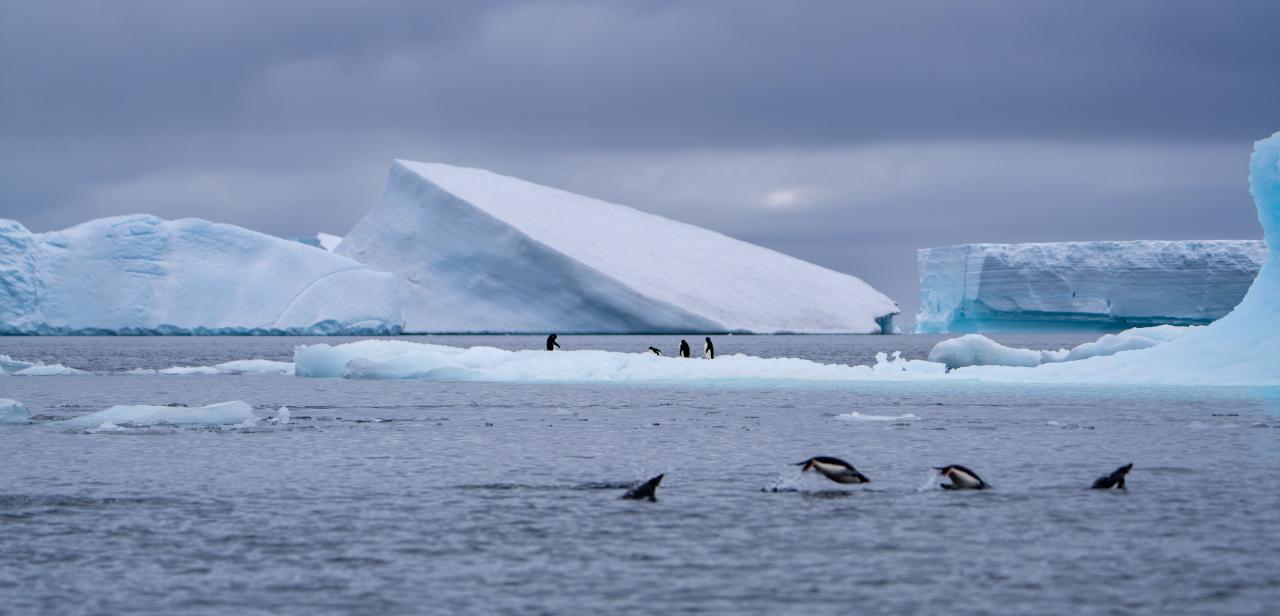
The impossibly beautiful light and scenery
Later in the afternoon, we stood on the observation deck, wrapped up in our parkas, soaking up the masterpiece that is Antarctica.
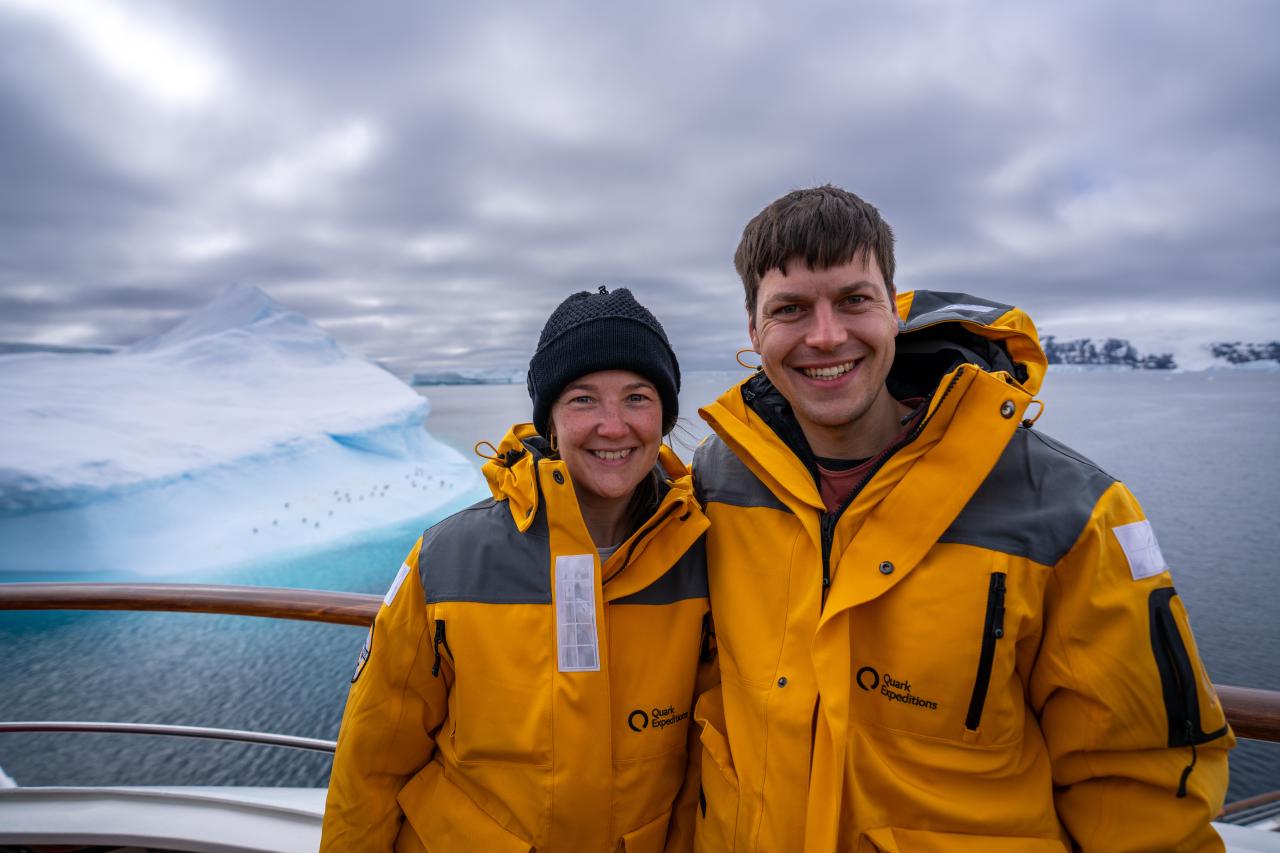
On the observation deck (yes, those are penguins on the ice behind us)
While absorbed in the beauty before us, a pod of orcas arrived. At least 20 individuals were swimming in the waters shared by our ship. Sighting a pod of orcas is not commonplace and we were so fortunate to be able to spend time on the deck, taking photos and observing their behaviour, watching each intake of breath send a spray of water into the air like a cloud of mist.
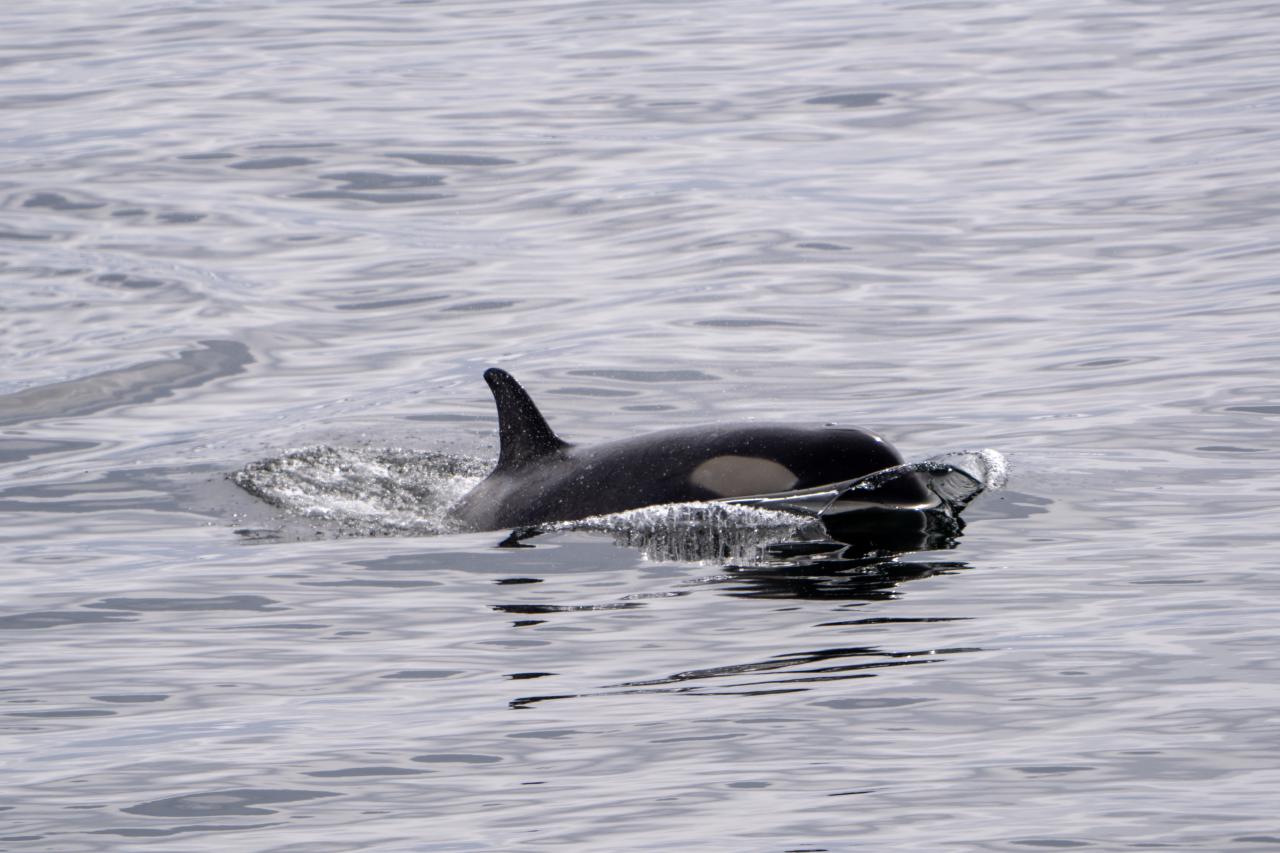
An orca photographed from the level 7 observation deck
After lunch we went on our afternoon zodiac cruise. The pod of killer whales had returned to our area and, not long after commencing our cruise, we were soon encircled by the pod. Our guide told us it is almost unheard of to witness them from zodiacs, and few of the guides had yet had this experience.
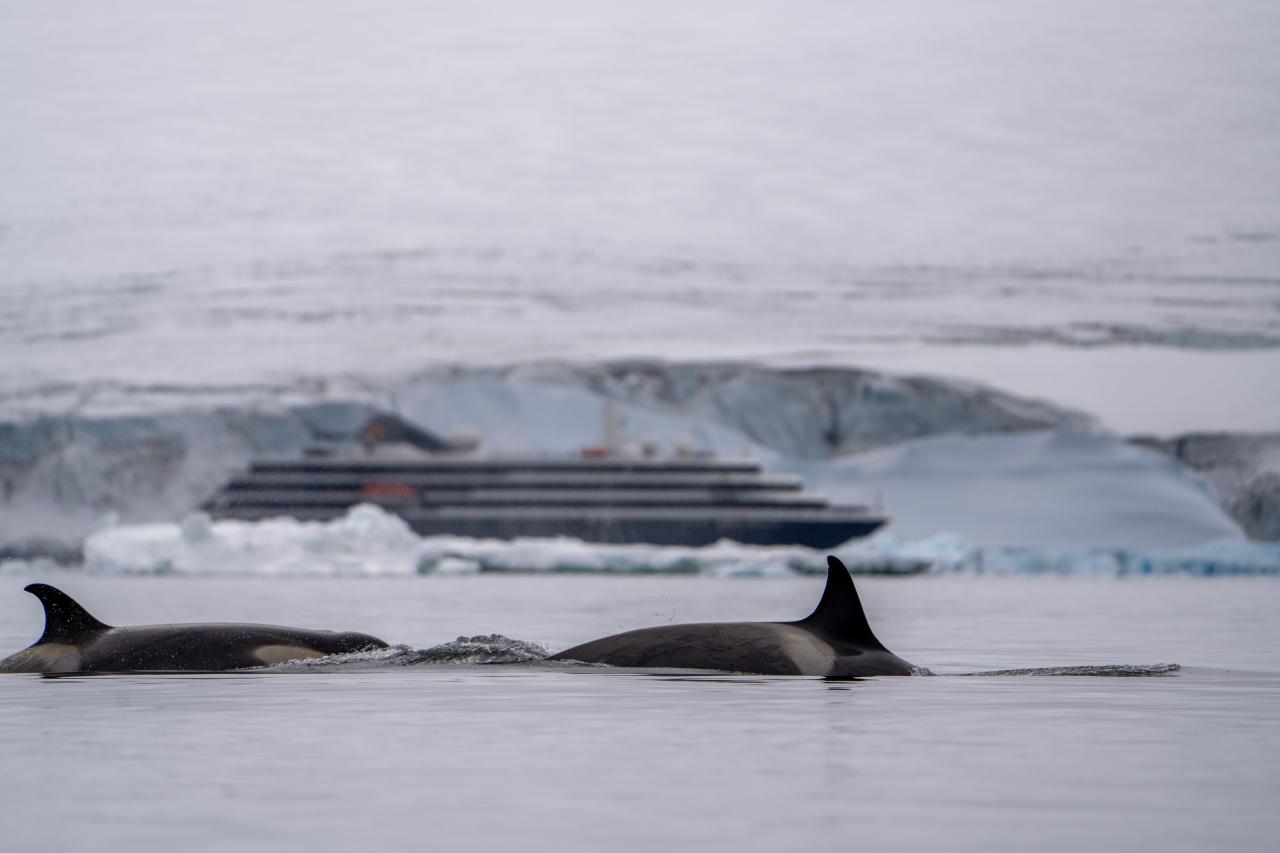
Orca photographed from the zodiac
We sat in silence, allowing the scene to consume us; the sound of the soft expulsion of air gently puffing into the air punctuated the otherwise still silence.
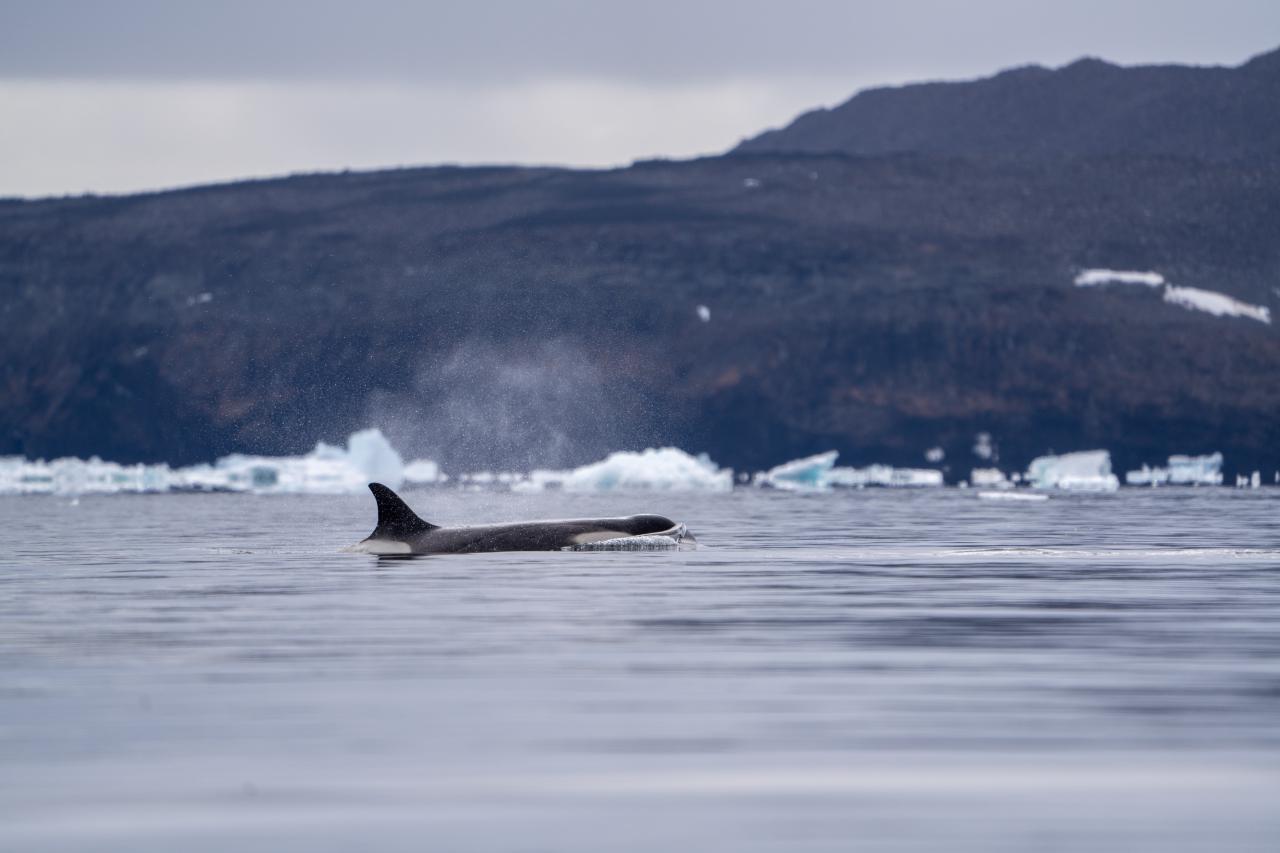
An orca photographed from the zodiac
After spending over an hour with them, we were cruising towards our landing site, which would be our one and only landing on the Antarctic Peninsula proper. However, part way there, the engine of our zodiac stalled, and our driver couldn’t get it started after multiple attempts. The driver of our buddy zodiac came to our rescue and towed us until it was possible to get the engine going again.
After that blip, we cruised towards the shore for our landing on the Antarctic continent. We climbed out of the zodiac and onto the pebbly shore, marking our official arrival on the seventh continent, as snow started to slowly fall. Each flake of unique design settled on our beanies and parkas momentarily before melting away. We had a photo to mark the occasion, and I spent a few minutes observing a pair of penguins, the snow flurries falling more rapidly now.
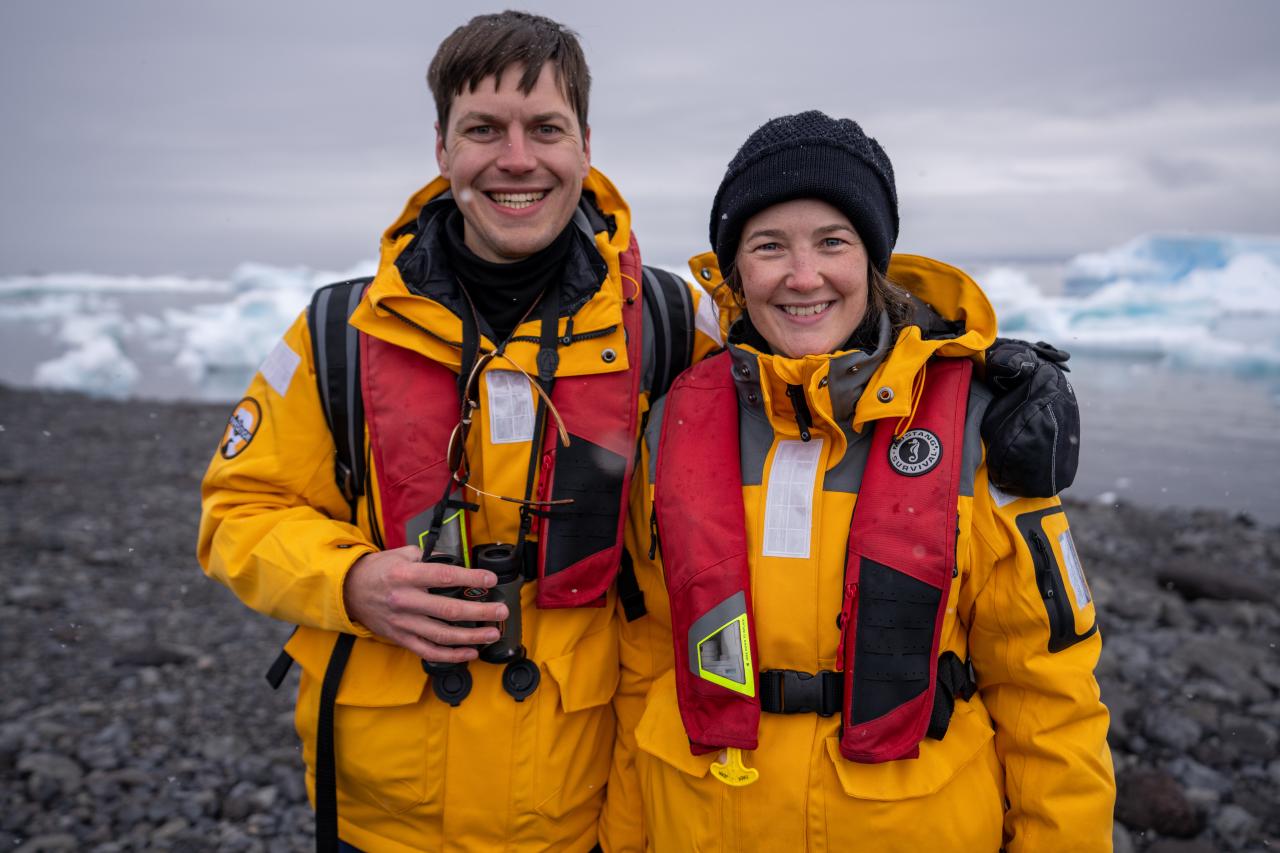
Standing on the seventh continent
It was the end to a perfect day. We cruised among orcas. We landed on the seventh continent under snowfall. It was more than I had imagined. We ended the day with another exquisite four course meal in the dining room, seated at a large table with a fun group of fellow guests, and now being completely relieved from seasickness, ordered a bottle of Châteauneuf-du-Pape from the wine list.
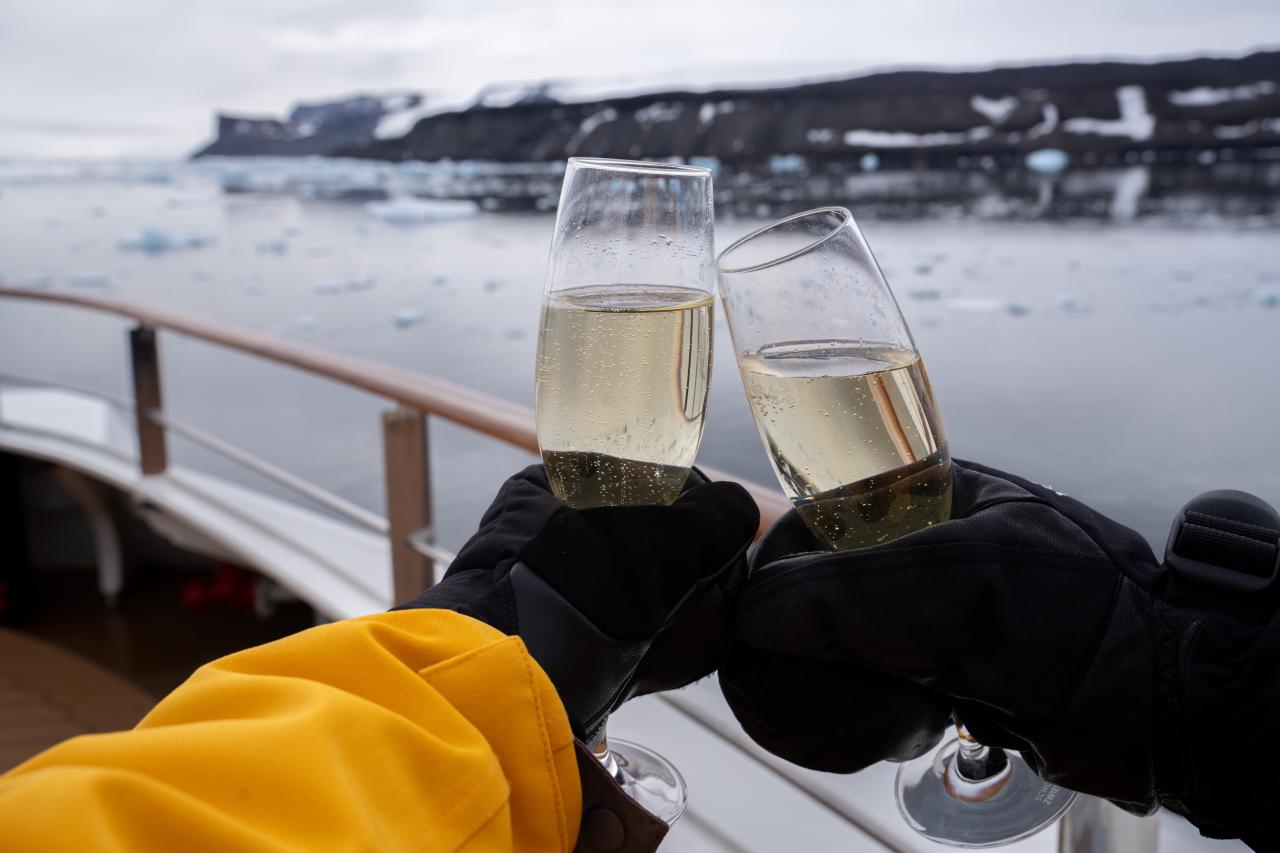
18 January, Snow Hill Ice Edge
Overnight, the captain took us further south into the Weddell Sea, towards Snow Hill Island. The island is known for supporting an emperor penguin colony, although reaching the island, or getting far enough through the sea ice to actually see an emperor penguin, is not remotely guaranteed. As much of the sea surrounding the island was still frozen solid, we were taken as close as possible to the edge of the impenetrable ice pack, which stretched out before us below a golden glow hovering on the horizon.
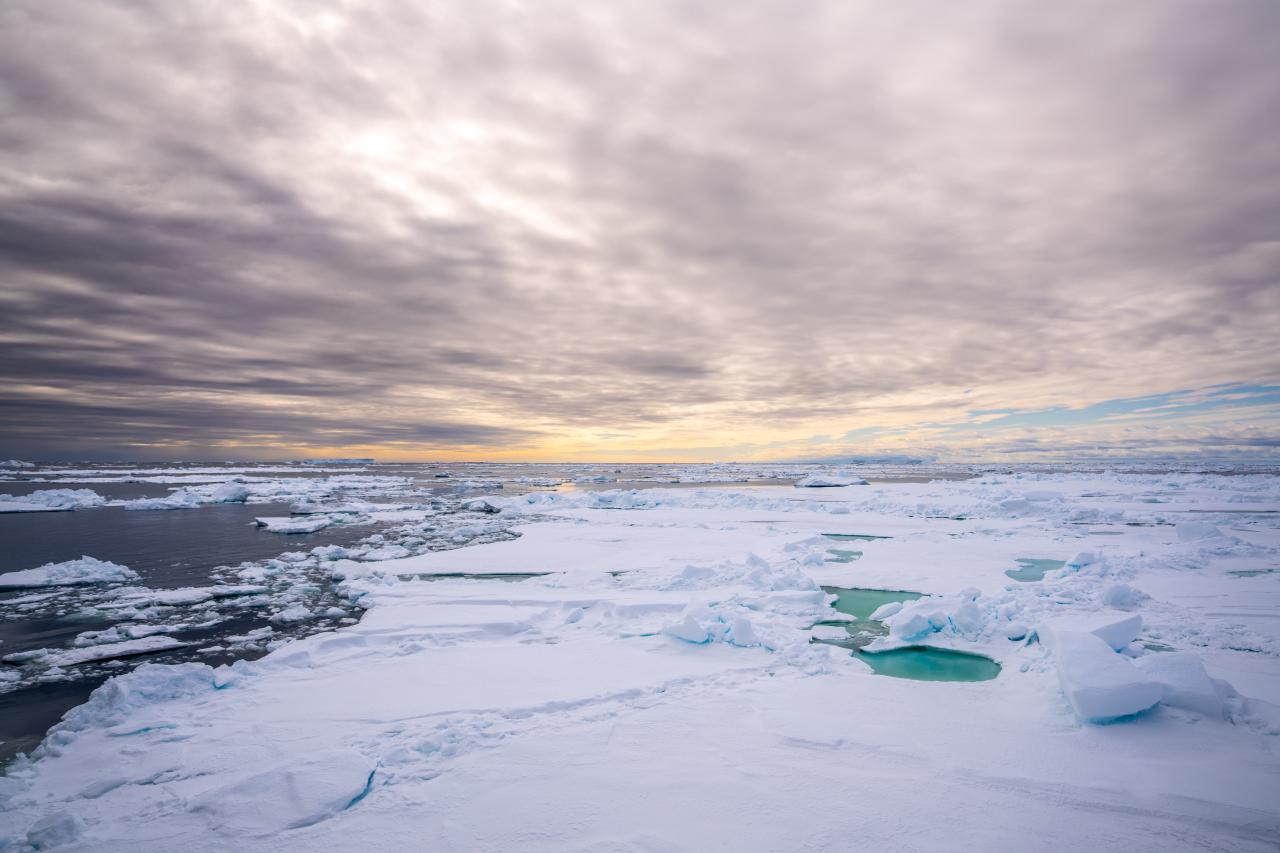
The Snow Hill ice edge
We thought we’d had our fair share of good luck by this point in our expedition, but our good fortune continued. As Shane gave our morning wake up call, his usual morning message - of the time, our geographic coordinates and the weather - included an additional surprise. There was a single emperor penguin standing on the sea ice at the front of the ship. We dressed quickly and warmly and made our way to the level 5 deck. A solitary juvenile stood on the ice below, less than 100m from the bow.
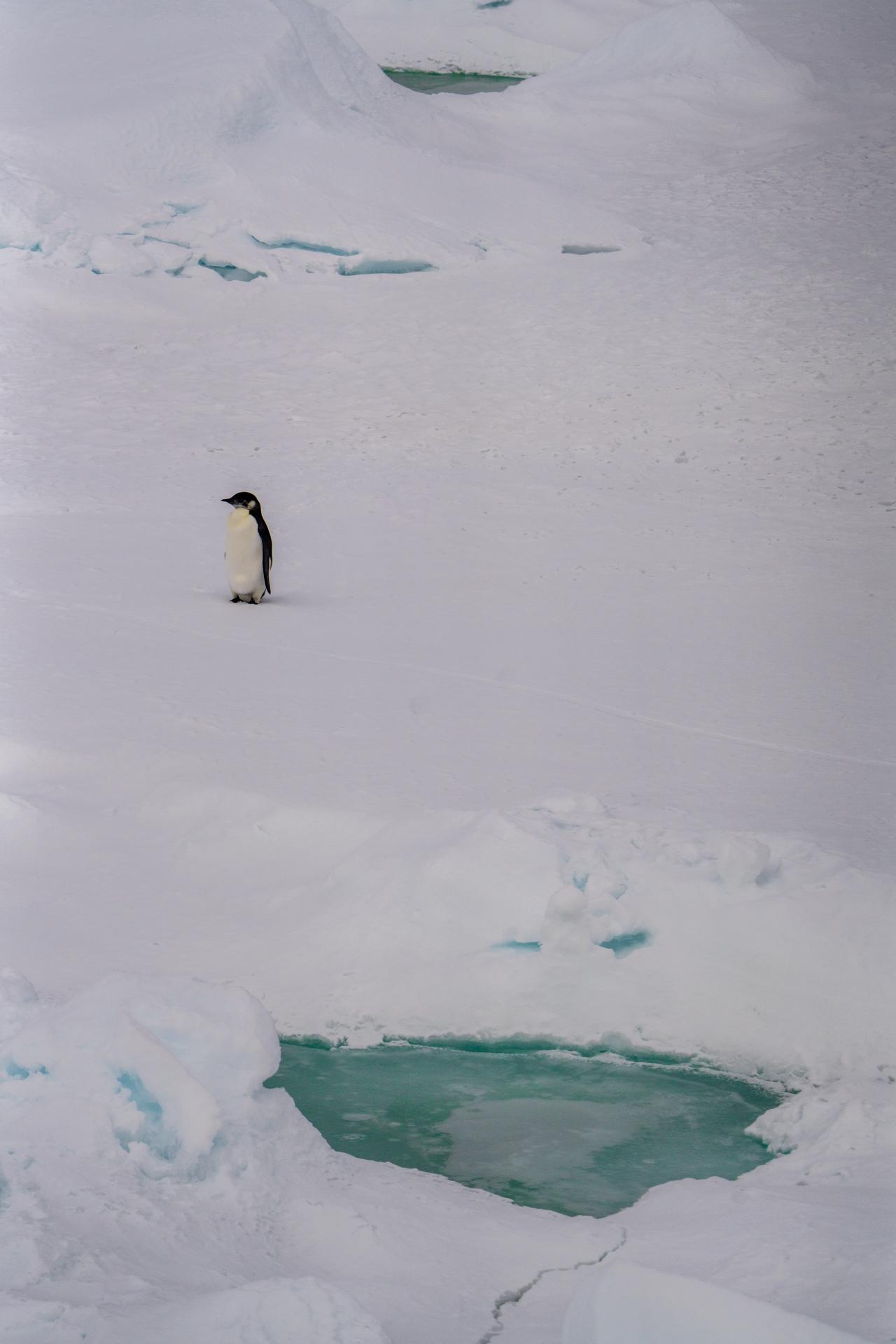
A juvenile emperor penguin on the sea ice near Snow Hill
It stood at nearly a metre tall. Its adolescent neck plumage was still a soft, mellow yellow and the white feathers of its chest were whiter than the snow on which it stood. Seeing an emperor penguin, the last of the seven penguin species possible on our journey, truly completed our penguin safari. We had been hopeful, but not at all expectant, that we would see this most magnificent species.
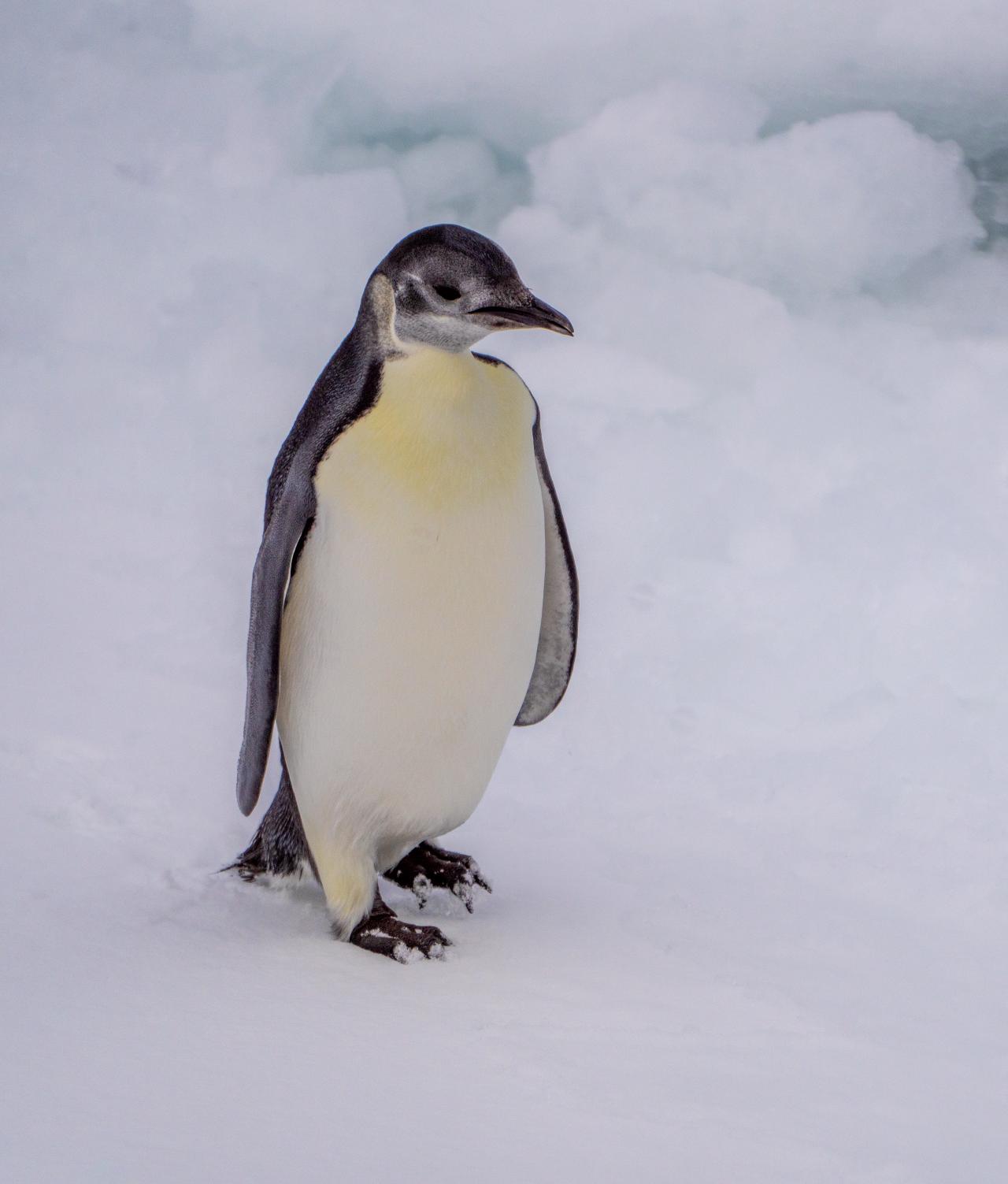
The juvenile emperor penguin, displaying its beautiful plumage
I settled into a cross-legged position on the deck, my 200-600mm lens positioned between the metal bars of the ship’s bow. I spent 40 minutes or more watching and photographing. Completely enchanted. After some time, it started making its way closer and closer to the ship, before it was so close that the 200mm was almost too close. And then, perhaps deciding it had now had enough of the human paparazzi, it shuffled to the ice edge, laid down, and slid out of sight into the icy water.
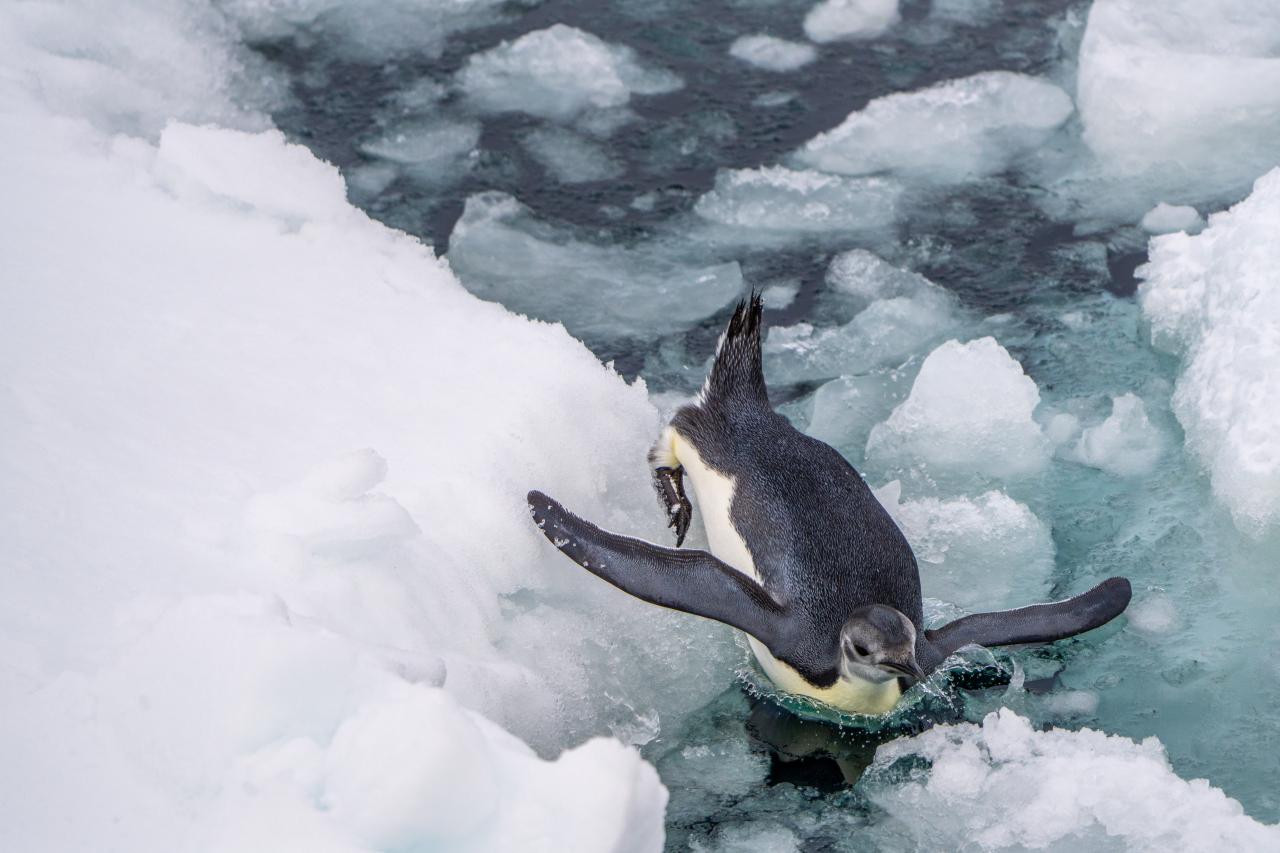
The emperor penguin departing
This incredible sighting delayed our morning zodiac cruise departure, which bothered no one. But, following the eventual disappearance of our penguin visitor, we finally departed. We spent an hour or so out amongst the sea ice in our zodiac. We explored the hidden passageways between icebergs, looking for more emperor penguins and other creatures that could be hiding among the wind-swept sea ice.
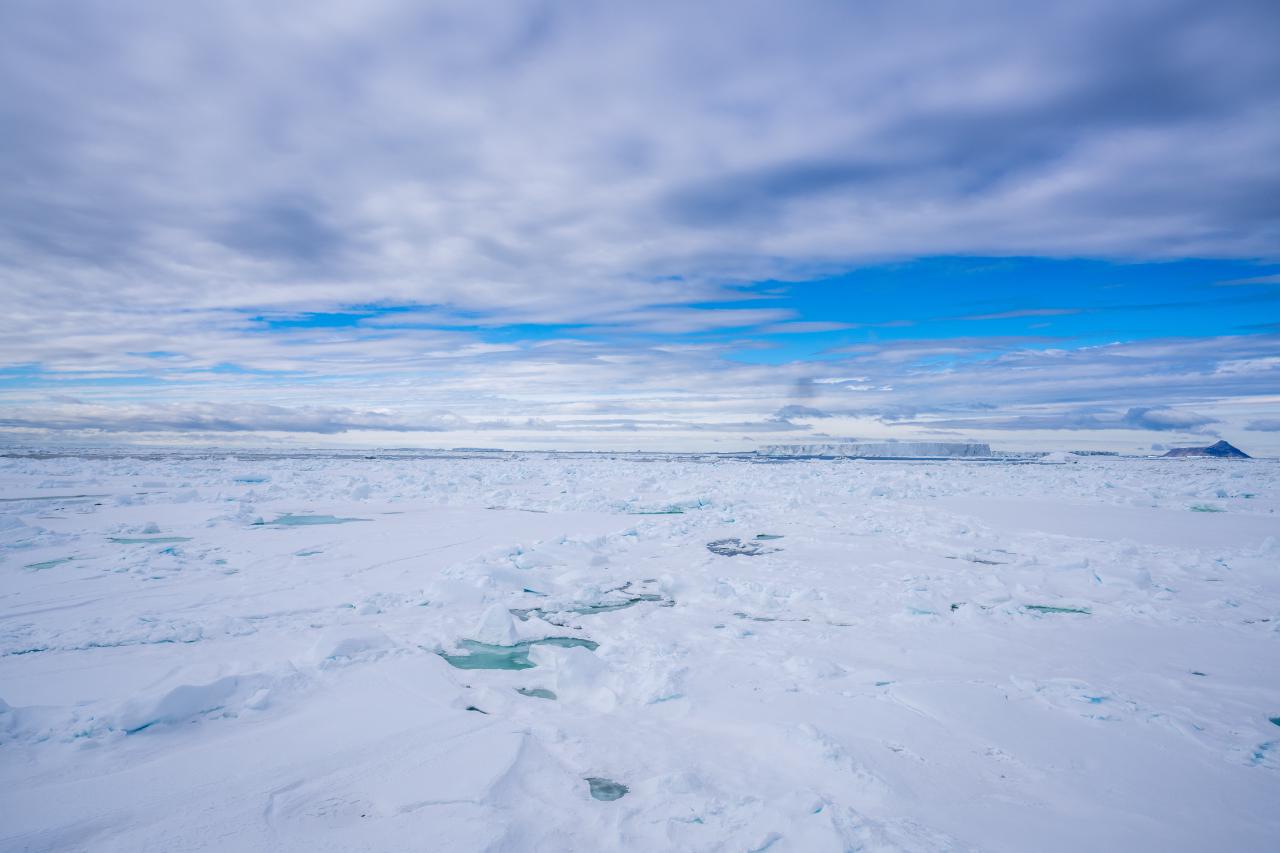
The thick ice pack near Snow Hill
Our good luck had still not run out. We came across another emperor penguin on the sea ice. Our guide told us that this was yet another special occurrence, with most emperor penguin sightings in this area occurring only from the ship and not from zodiac cruising.
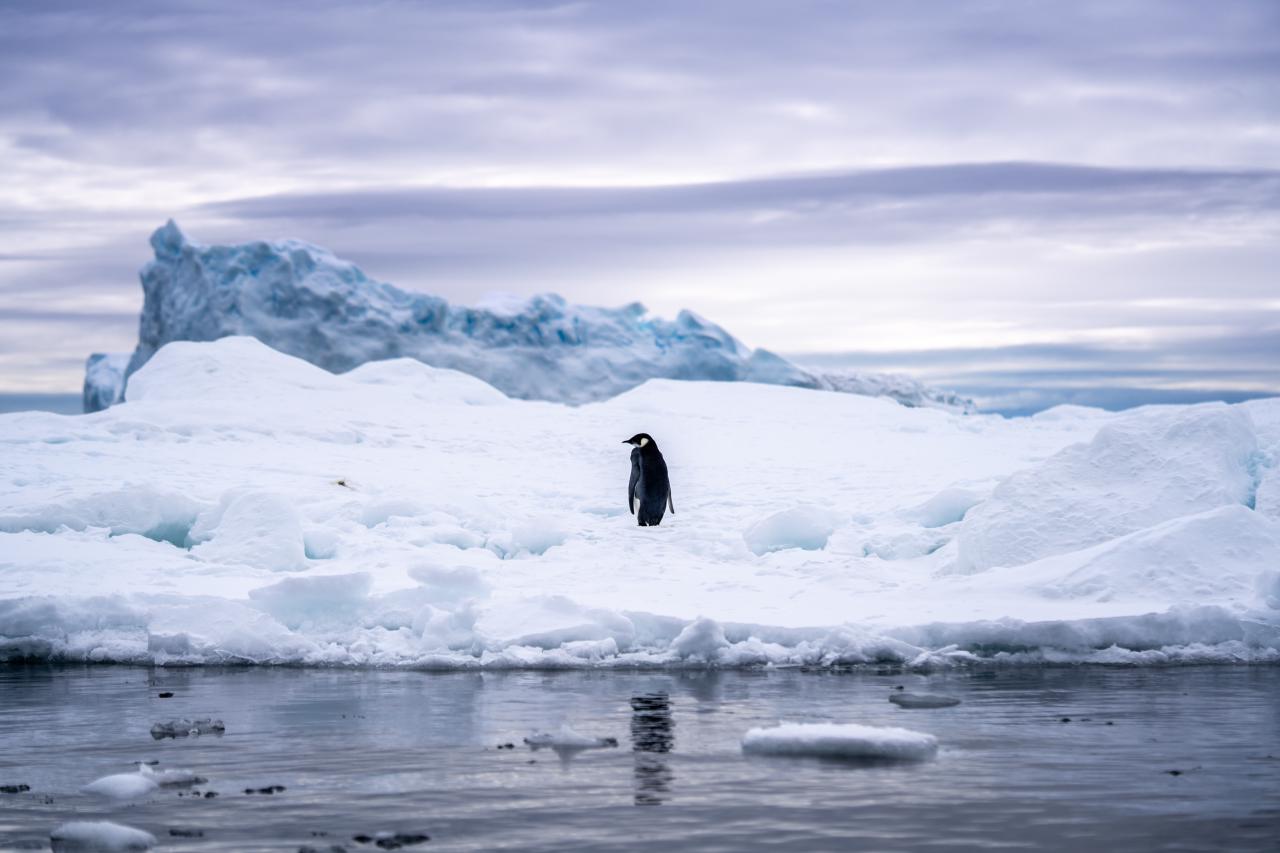
A second emperor penguin on the sea ice, framed by a mauve sky
We also came across a large, solid ice float playing temporary home to a beautiful weddell seal.
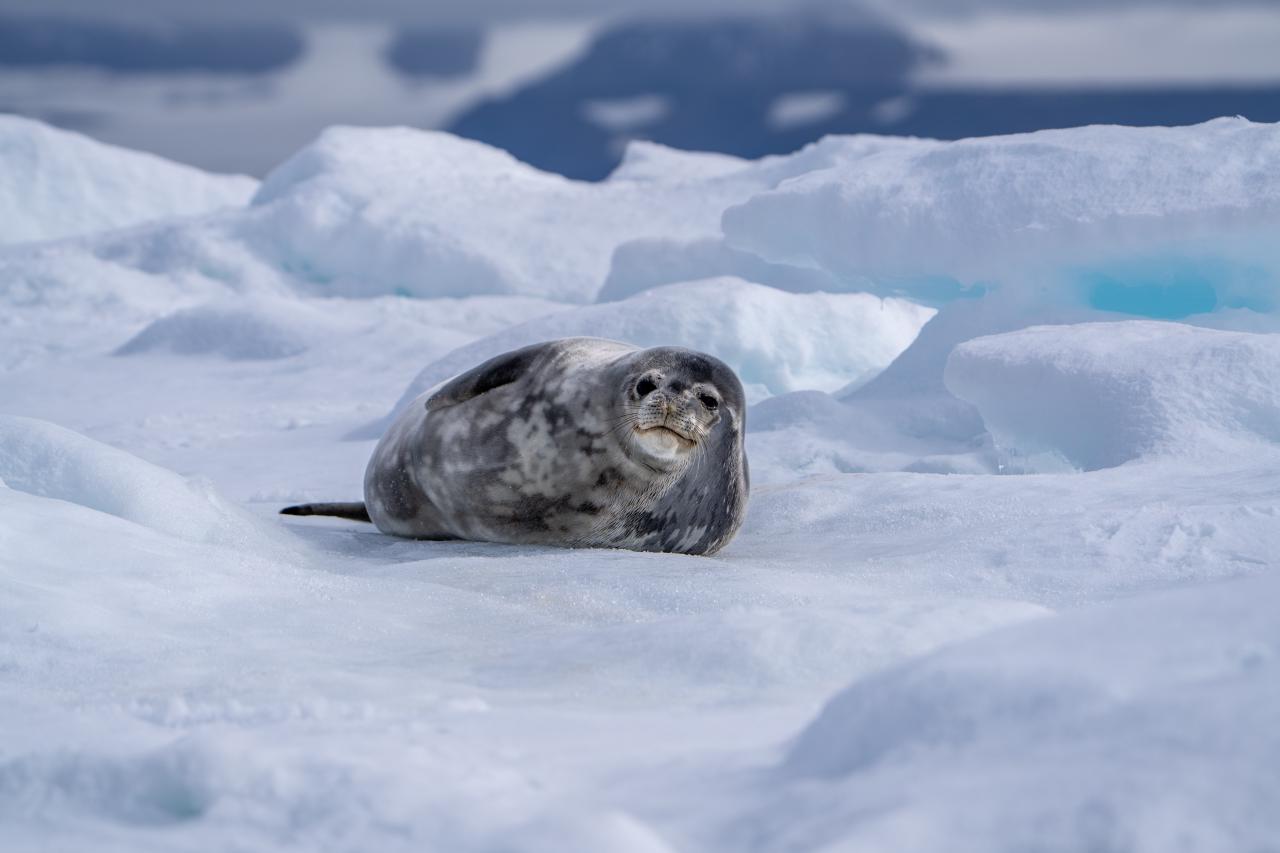
A weddell seal in the Weddell Sea
The ice alone is beautiful: being relentlessly transformed into ice sculptures that are changing each day as the wind moves and shapes, and reshapes, the falling snow and fluctuating ice.

Beautiful ice sculptured by wind into intricate patterns
That afternoon we did the polar plunge. Our excursion group was the first to be called and Dylan and I arrived at the gangway first. And so, Dylan was the very first to take the plunge into the icy ocean, and I was second.
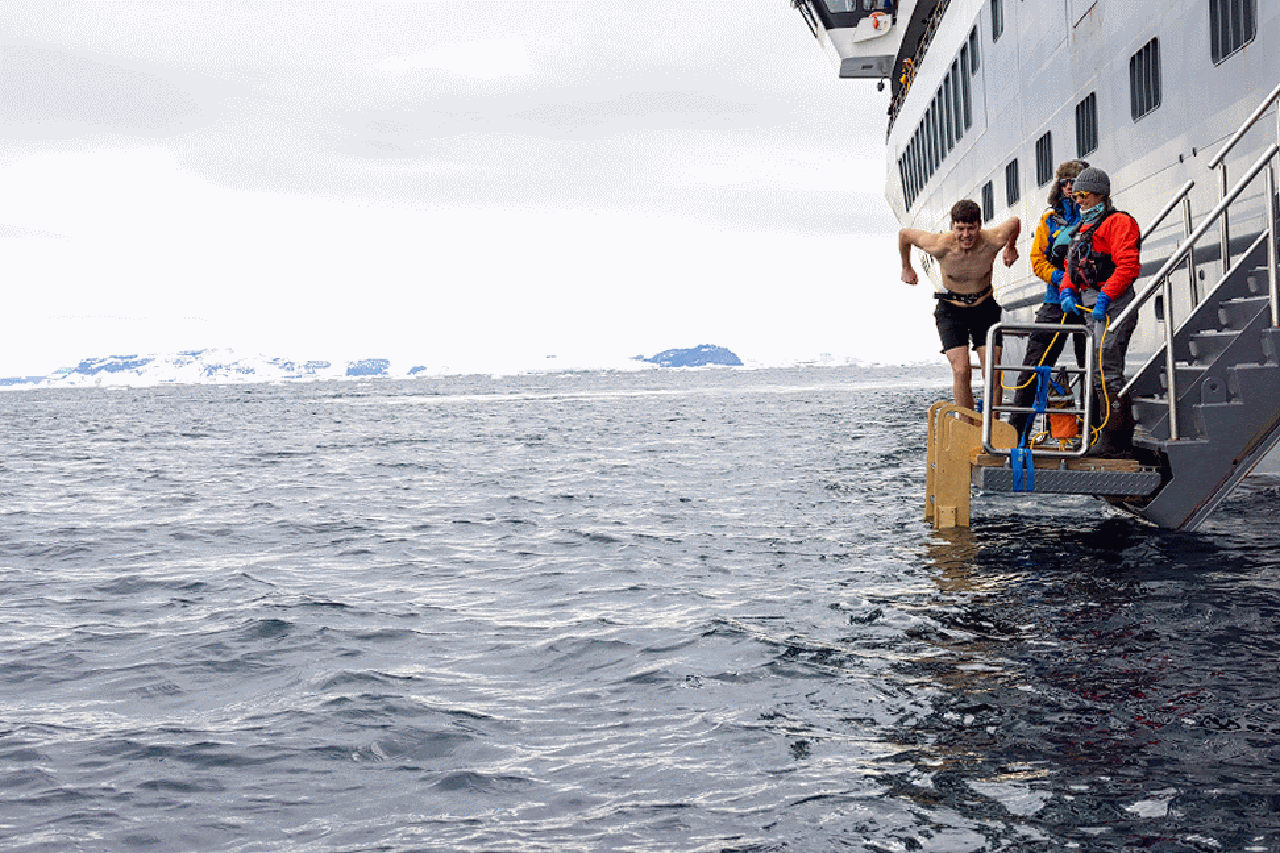
Dylan doing his polar plunge. Photographs by Brooke and composed into a gif by Dylan
It was invigorating. The shock of the frigid water literally took my breath away as I resurfaced, gasping, seconds after falling through the stream of bubbles created on entry. The prickly needles stabbed at my flesh. I stroked back to the ladder and grasped the rungs on the surface, searching with my numb legs for the steps below. The water was -1.5ºC. In other words, practically as cold as salt water can possibly be without no longer being liquid. After our cold immersion, we headed straight for the sauna, and then the hot tub, to warm up. I immediately wanted to do it all again.
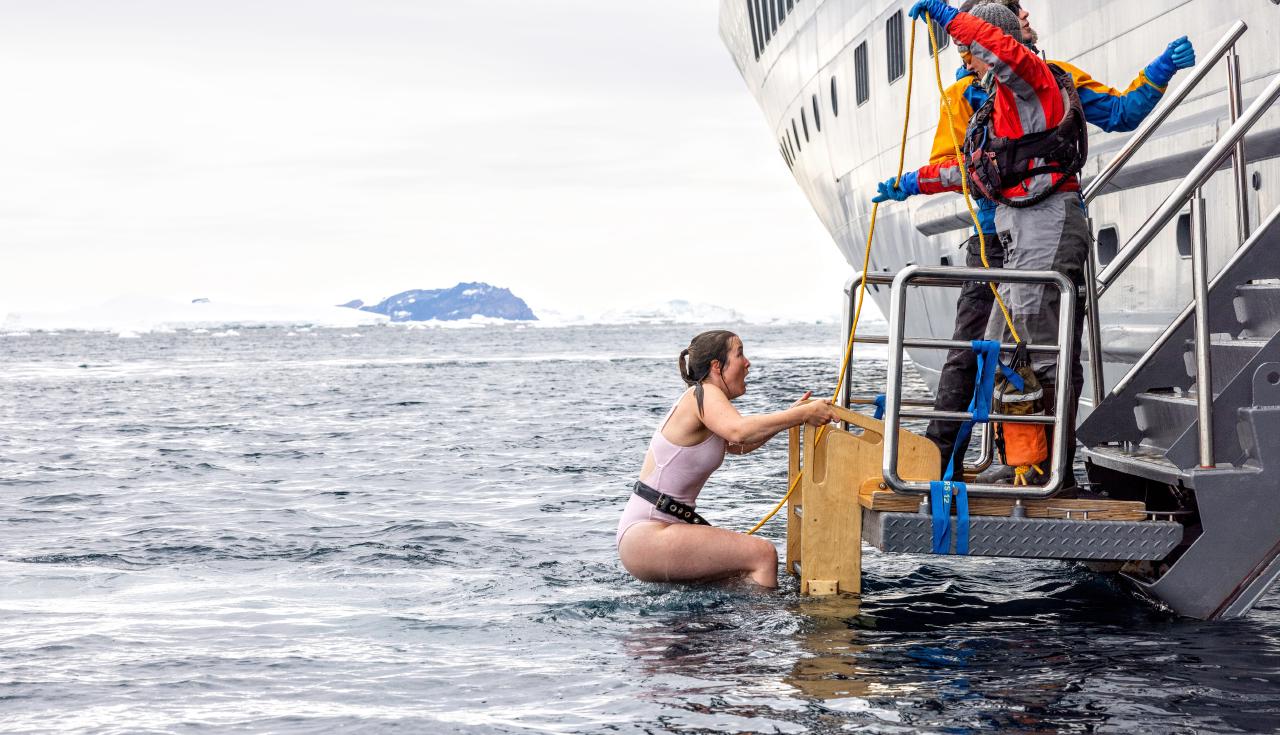
Jess completing her polar plunge. Photograph by Brooke
19 January, Tay Head + Paulet Island
The following day we landed at Tay Head, home to a colony of Adélie penguins, as small flurries started to fall out of the dark grey skies, shadowing us from above.
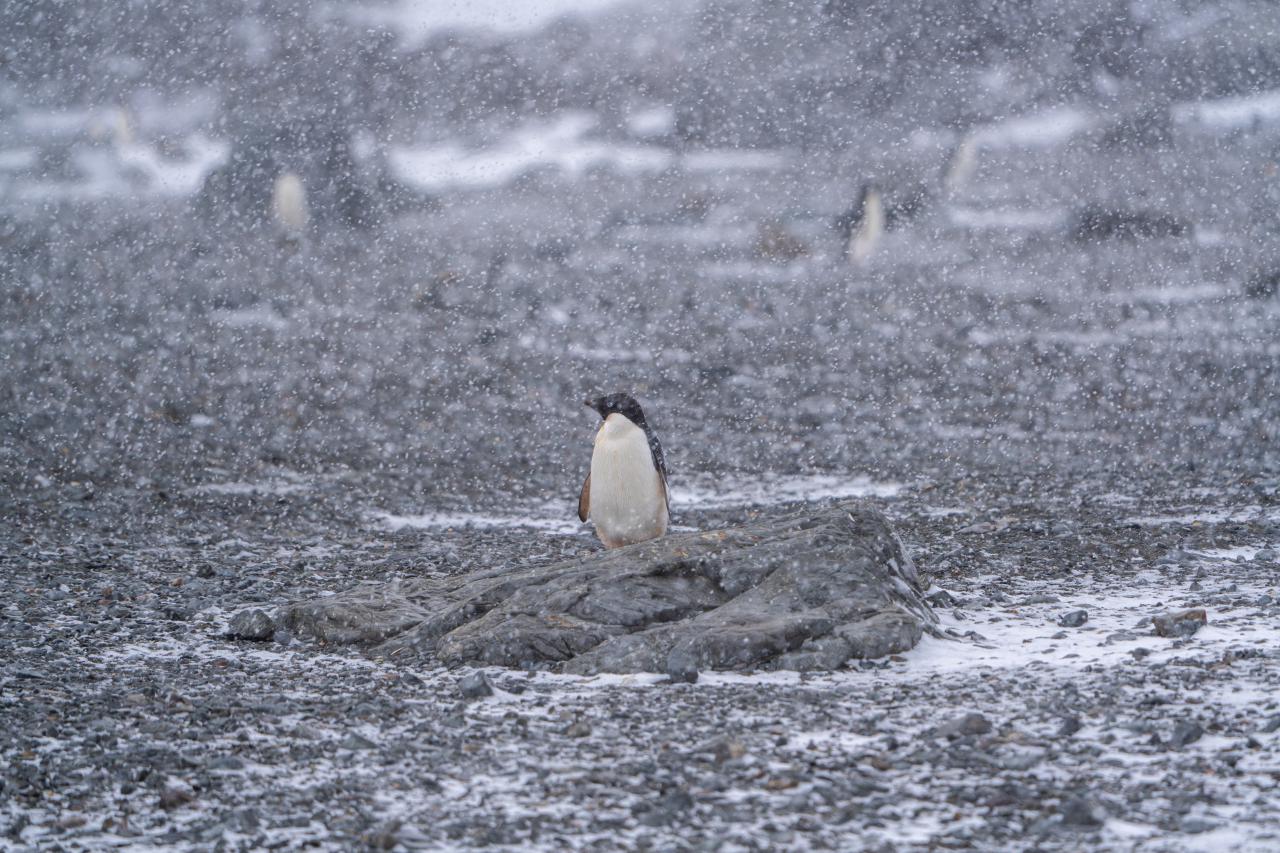
Tay Head, and Adélie penguins, under a blanket of snow
We spent a little under an hour walking around, observing the adorable penguin behaviour, before the snow started to fall in earnest. We were transfixed under the flurries, filming and photographing these endearing penguins, utterly captivated under their spell. It was also a first for me photographing in snowfall.
The entire landscape became an image of black and white. White snowflakes fell from black clouds, which were reflected in the black pebbled beach, occupied by the black and white Adélies. Many of my photos from the afternoon are reminiscent of those photographs from the early explorers whose memories and experience of this incredible continent were captured only in black and white stills.
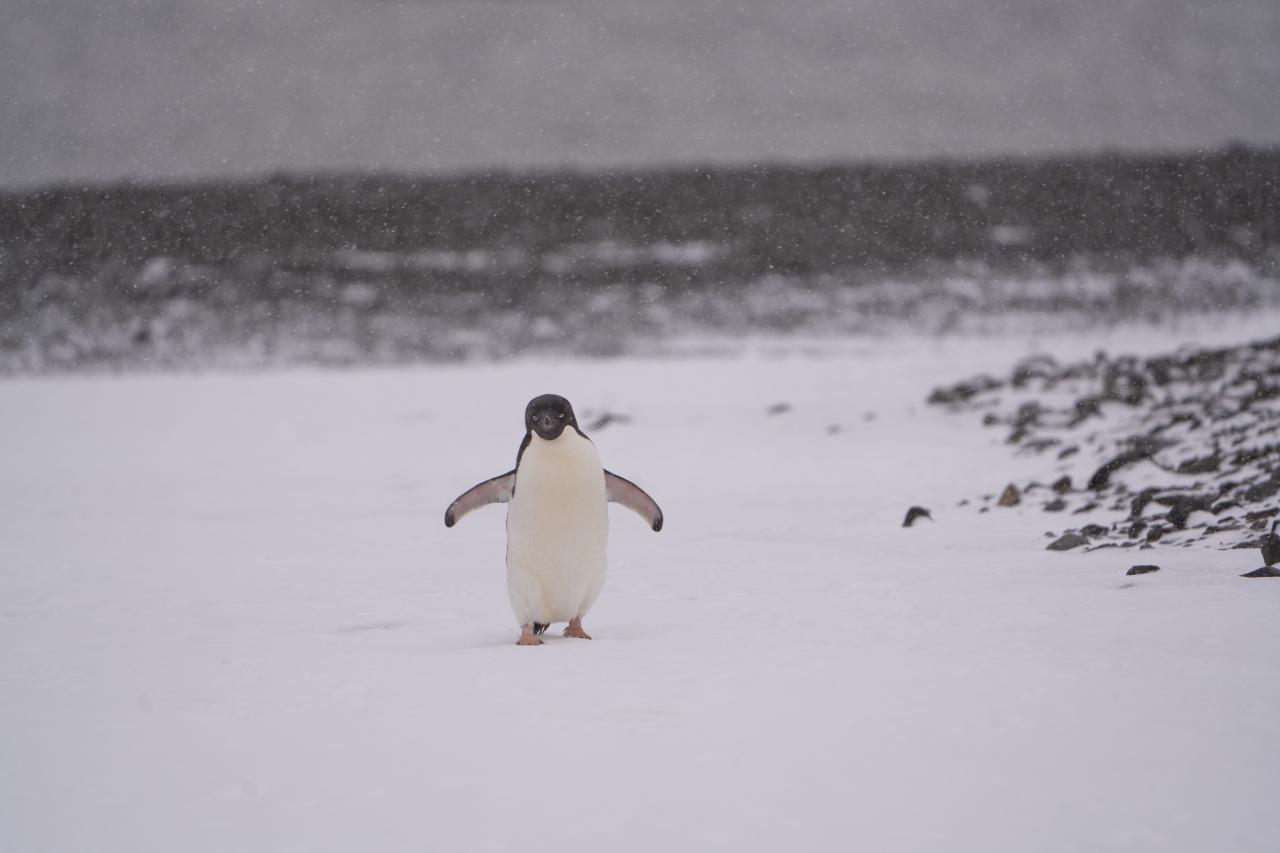
Black and white scenery in the snowfall at Tay Head (but not a black and white photograph)
The zodiac ride back to the ship’s gangway was rough. Although we managed to get tied up at the gangway in one attempt, it was bumpy and with each swell, the zodiac crashed into the side of the gangway. Once safely in the mud room, we completed the now familiar process of removing our muck boots and wet gear before heading up to our room to enjoy a warm shower and change into clean clothes.
After lunch, we made the most of the few hours’ free time we had by going to the gym and then enjoying a hot tub and a sauna. We half expected that we wouldn’t be doing the afternoon’s activity given the weather; however, the weather had calmed in the intervening hours as we travelled to our new location, and just as we arrived back in the room from the sauna, they began to call the groups for an afternoon zodiac cruise around Paulet Island.
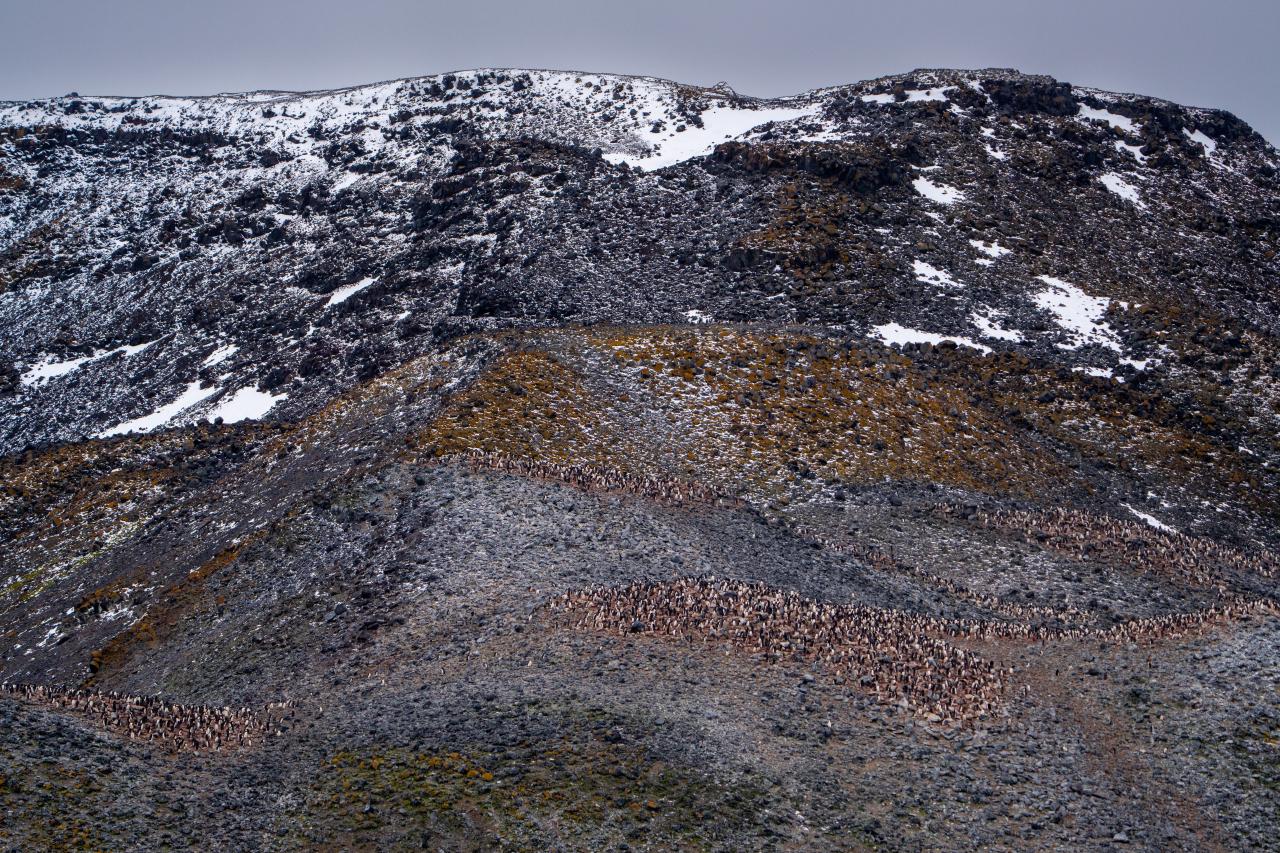
Paulet Island, covered in penguins and snow
It was windy and bitterly cold. Dylan and I spent the best part of the excursion trying, for the first time, to get underwater footage of the penguins porpoising around the zodiac. This involved removing the double layer of gloves and mittens we had donned and putting the GoPro and our exposed hand into the icy water for minutes at a time, hoping that at some point a penguin popped into view of wherever the camera was facing. We weren’t very successful and the GoPro shut down from the intense cold. The GoPro’s resignation coincided with our own as the cold pain burnt sharply in our tingly hands. We decided that we’d better stick to photography above water.
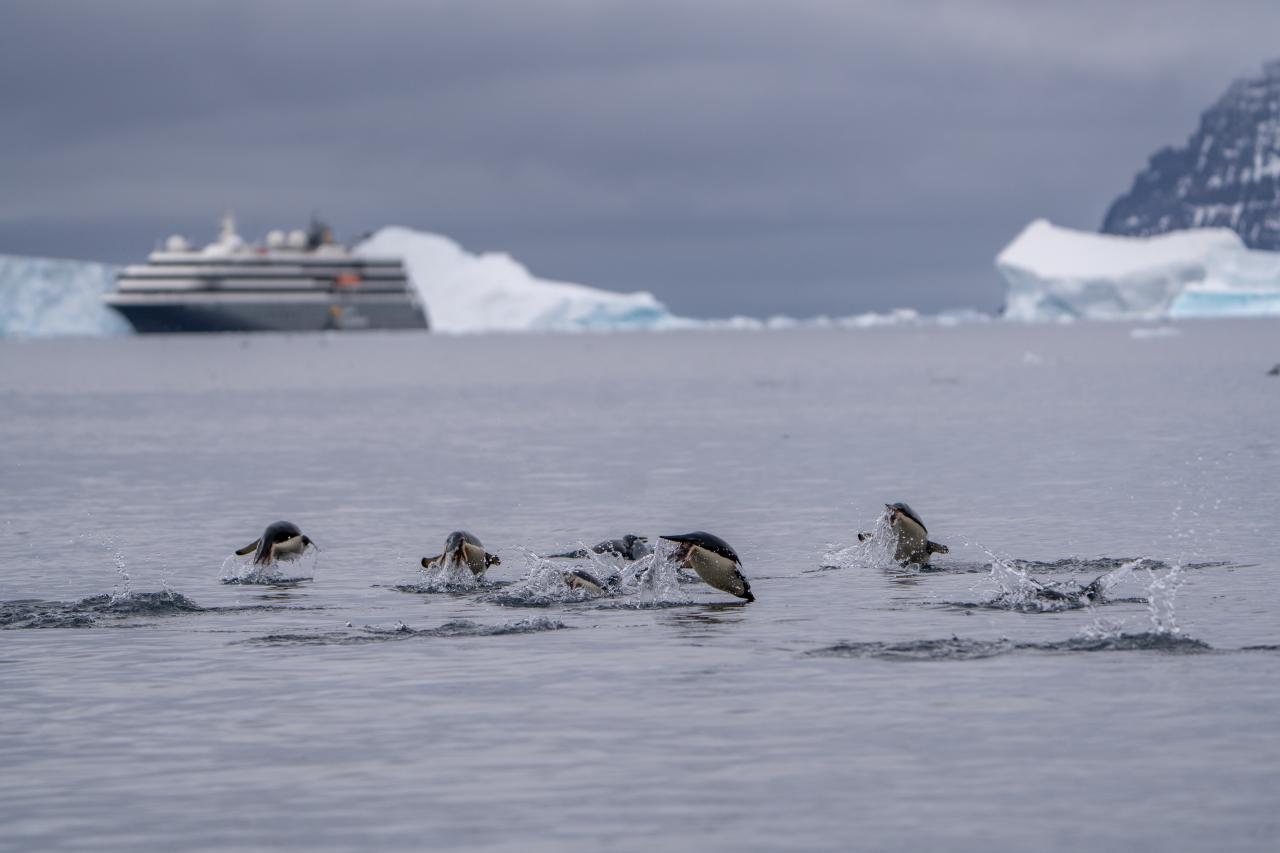
We had better luck with photographing porpoising penguins above water
After an hour we were all ready to get back to the warmth of the ship and to cradle a mug of hot chocolate in the main lounge. That evening, we enjoyed another fun dining experience and after dinner, gathered with others in the main bar for that evening’s bar talk from Colin, the onboard historian, to hear all about his adventure sailing across the Atlantic Ocean in a hurricane.
20 January, Half Moon Island + Deception Island
It was with disappointment that our final day of activities arrived. Overnight, we’d travelled north and arrived in the South Shetland Islands, as we started to make our way into higher latitudes.
We awoke to a glorious day that was in stark contrast to the blizzardy conditions of the previous day. It felt like waking up on a blue bird day at the slopes; the beautiful landscape revealing itself after a snowy day with a bright blue, cloudless sky drenching the fresh snow under glittering sunlight. The white powdered land mass of Half Moon Island sat off the port side, outside our cabin window.
The island is so named for its crescent-shaped bay, which on that sun-filled day, was reflected in the sky above with another perfect half-moon, bright white against the brilliant blue sky.
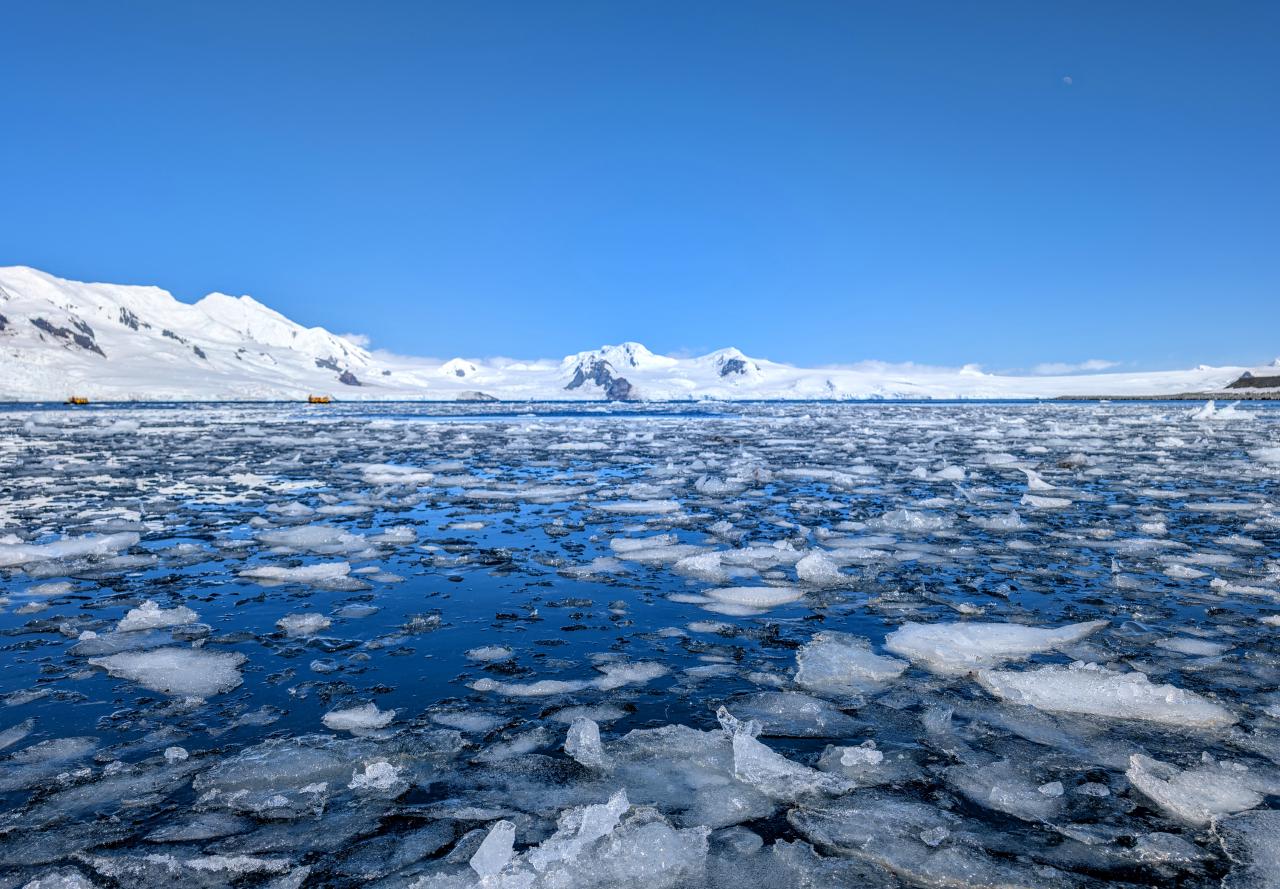
A half moon above Half Moon Island. Can you spot the moon?
We spent the morning at Half Moon Island for a landing and zodiac cruise. We landed on the beach and walked among the chinstrap penguins, or chinnys, as we now call them.
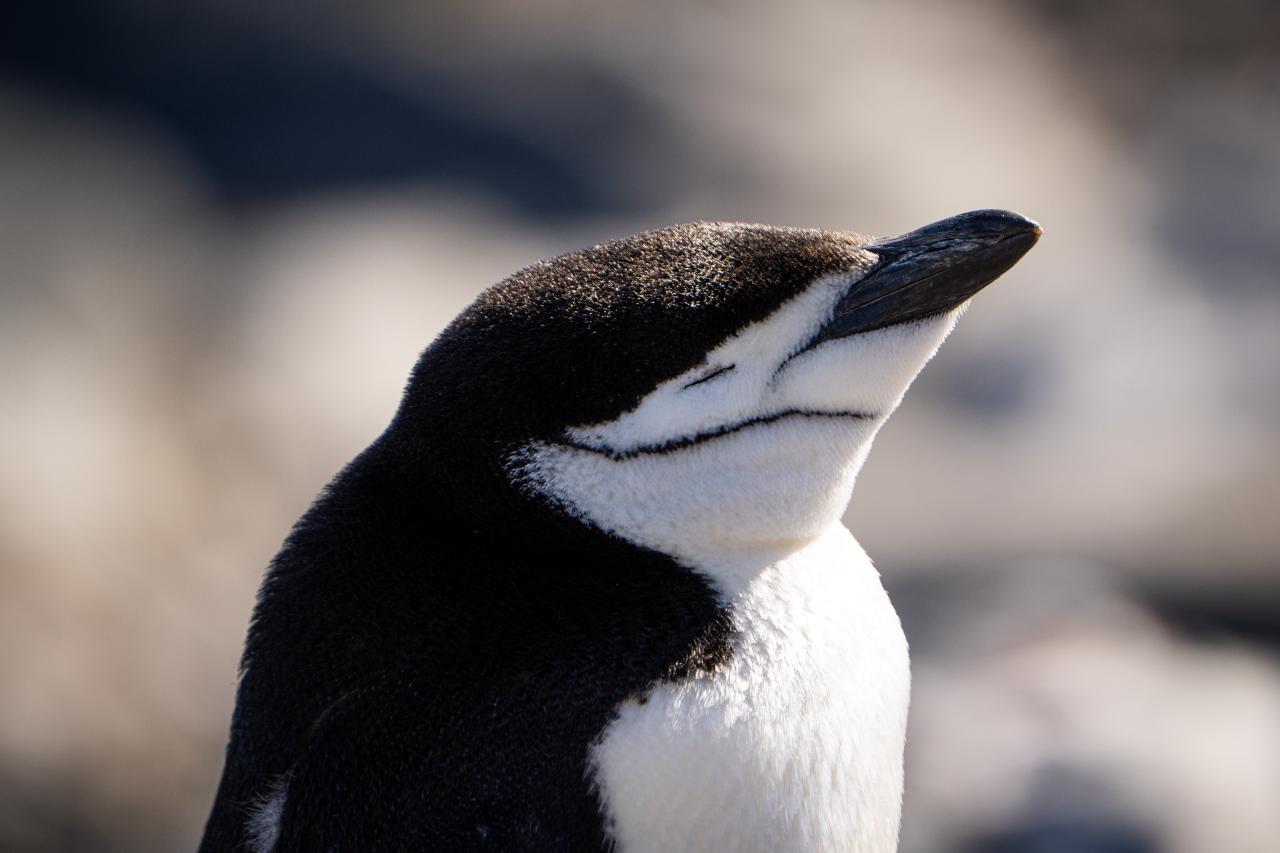
A chinstrap penguin, napping in the sun
We paused at the top of the island for a photo before slowly making our way across the rocky landscape, stopping regularly to give way to the penguins, especially along the penguin highway; a well-trodden, eroded pathway used by the chinstraps for their commute between the nests and shore.
We clambered further over rocks and boulders, deliberately avoiding the accessible, rock-free path used by the penguins, to a place on the edge of the island where adults sat with their fledgling chicks.
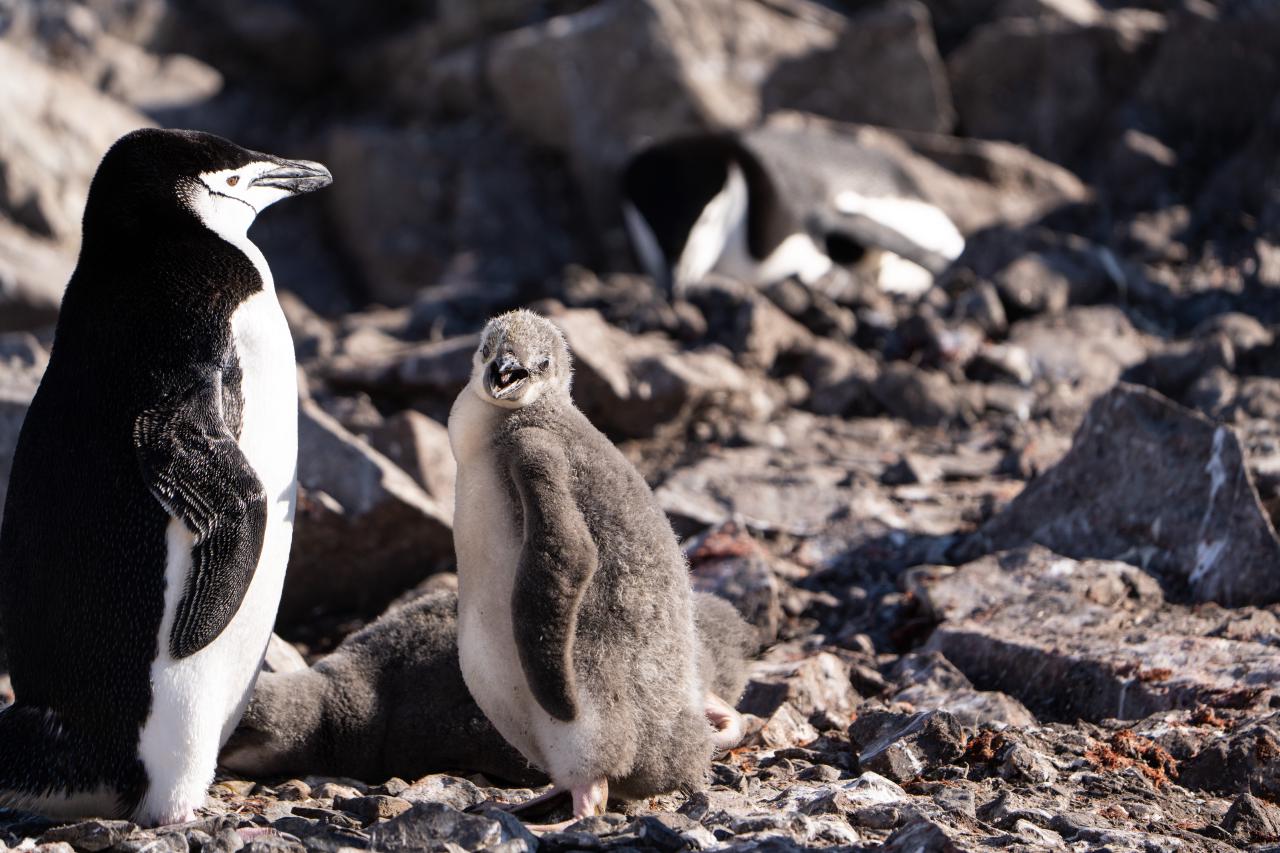
A chinstrap and its chick at Half Moon Island
After the landing, we went for a zodiac cruise in and around the bay. Our zodiac driver was buddied with Jens, the tour guide known as ‘the whale whisperer’. In the space of 10 minutes we saw minke whales and humpback whales. We sat in silence and observed them from a distance, the occasional sound of their breath, and the gentle lapping of the water at the zodiac, the only sounds in an otherwise silent expanse. I chose not to take photos and instead, to absorb the moment and take away only the experiential memory.
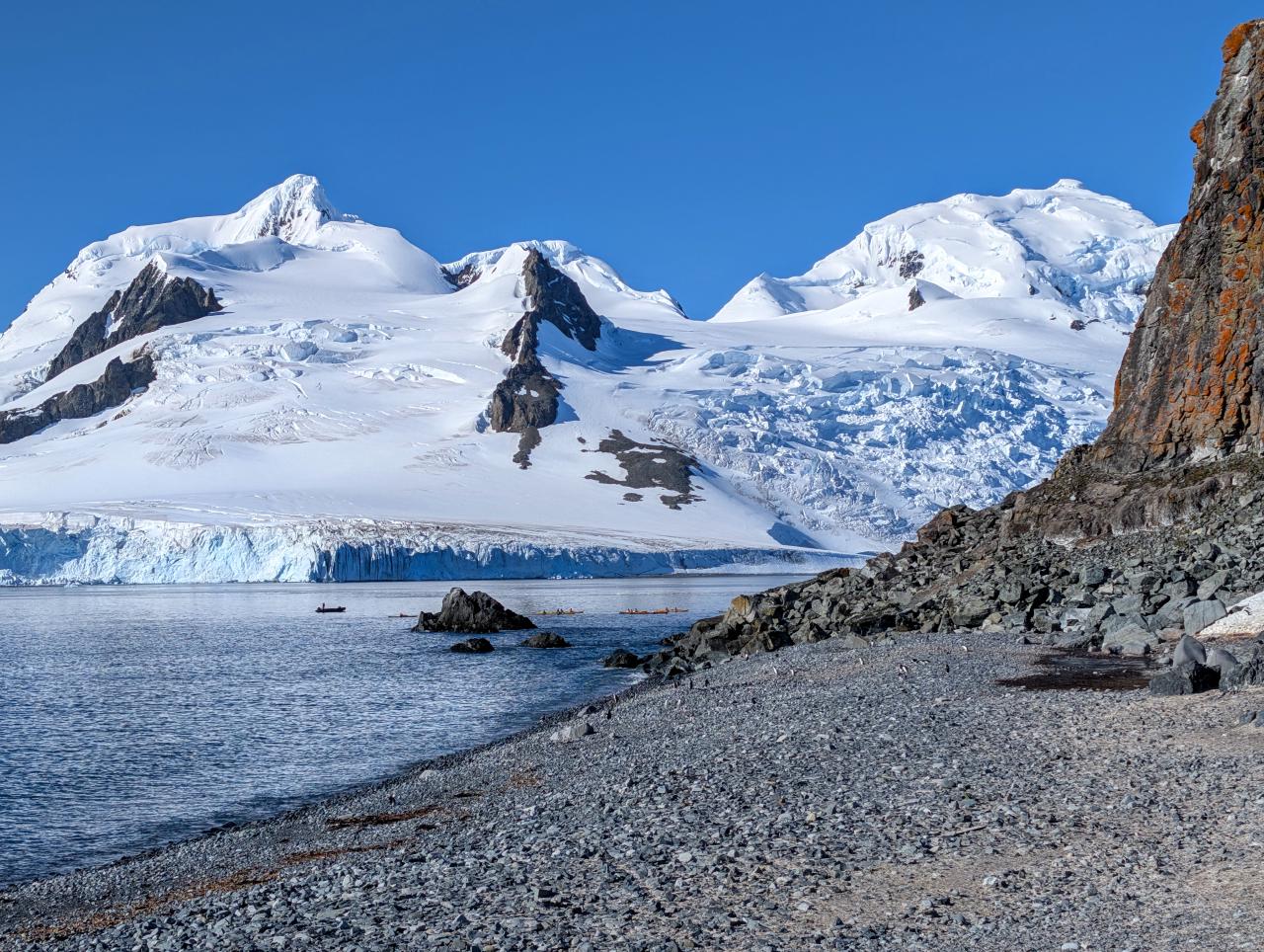
Half Moon Island
During the lunch hour, the World Explorer began its journey to our second location for the day, Whalers Bay at Deception Island, where we hoped for an afternoon zodiac cruise and landing at the old whaling station. During the journey, I took the opportunity to get a haircut at the beauty salon (yes, there is a hairdresser on the ship). I avoided the need to complete that errand when I got home, and can now say that I got a haircut in Antarctica!
We arrived at about 3.00pm in the afternoon at Deception Island; an active volcano, with one edge of the caldera missing, allowing the sea to flood the centre.
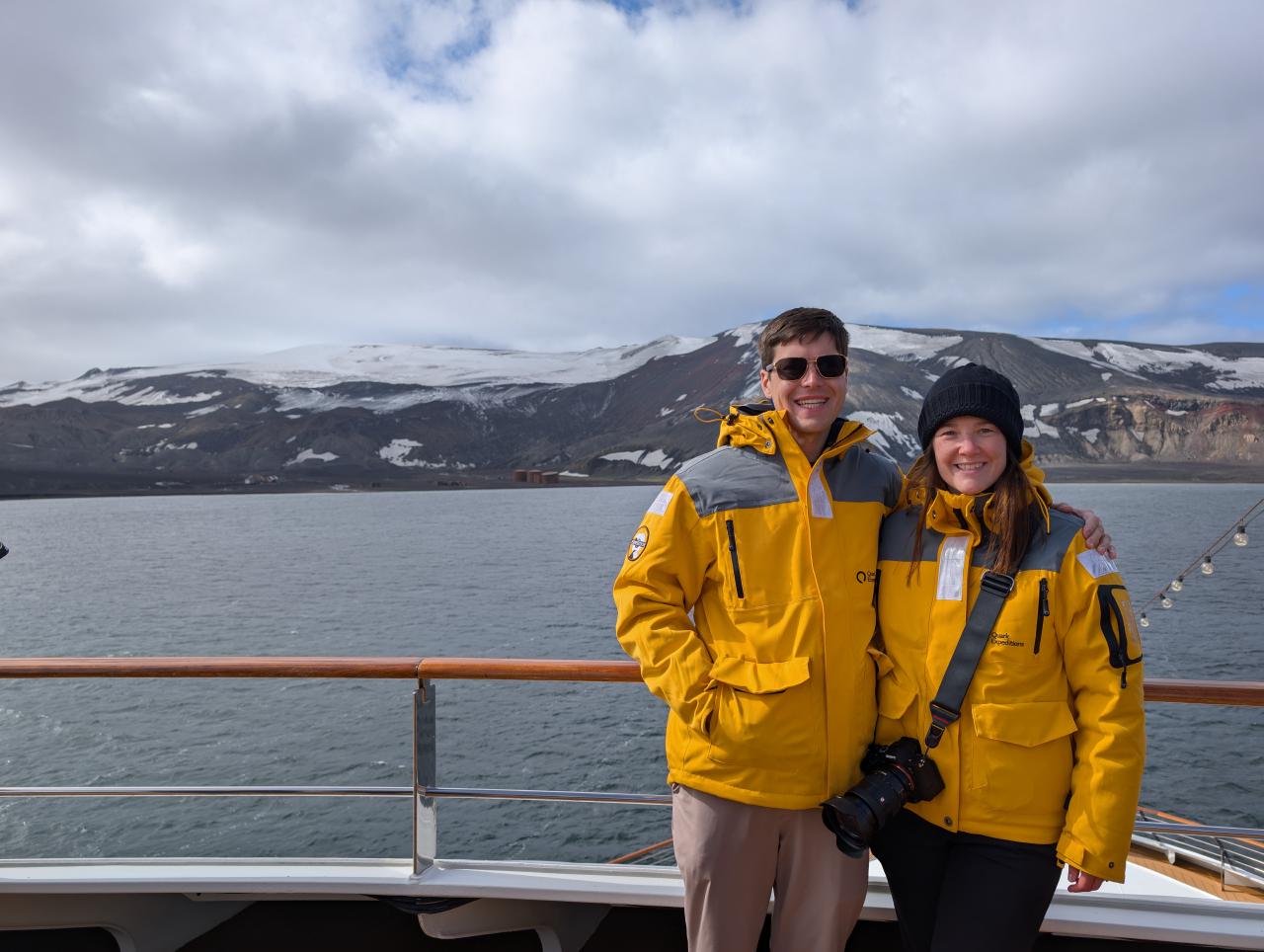
Arriving at Deception Island, in the crater of the volcano
We took our final zodiac cruise, which following previous days’ wildlife and scenery, was a little underwhelming. Added to that, it was blowing 35 knot winds and as Dylan and I were seated at the front of the zodiac, we spent the best part of an hour with our heads bent low as waves crashed over the front of the zodiac, drenching us with each fall. After 90 minutes, we landed on the black beach, which was issuing streams of steam along its volcanic shoreline.
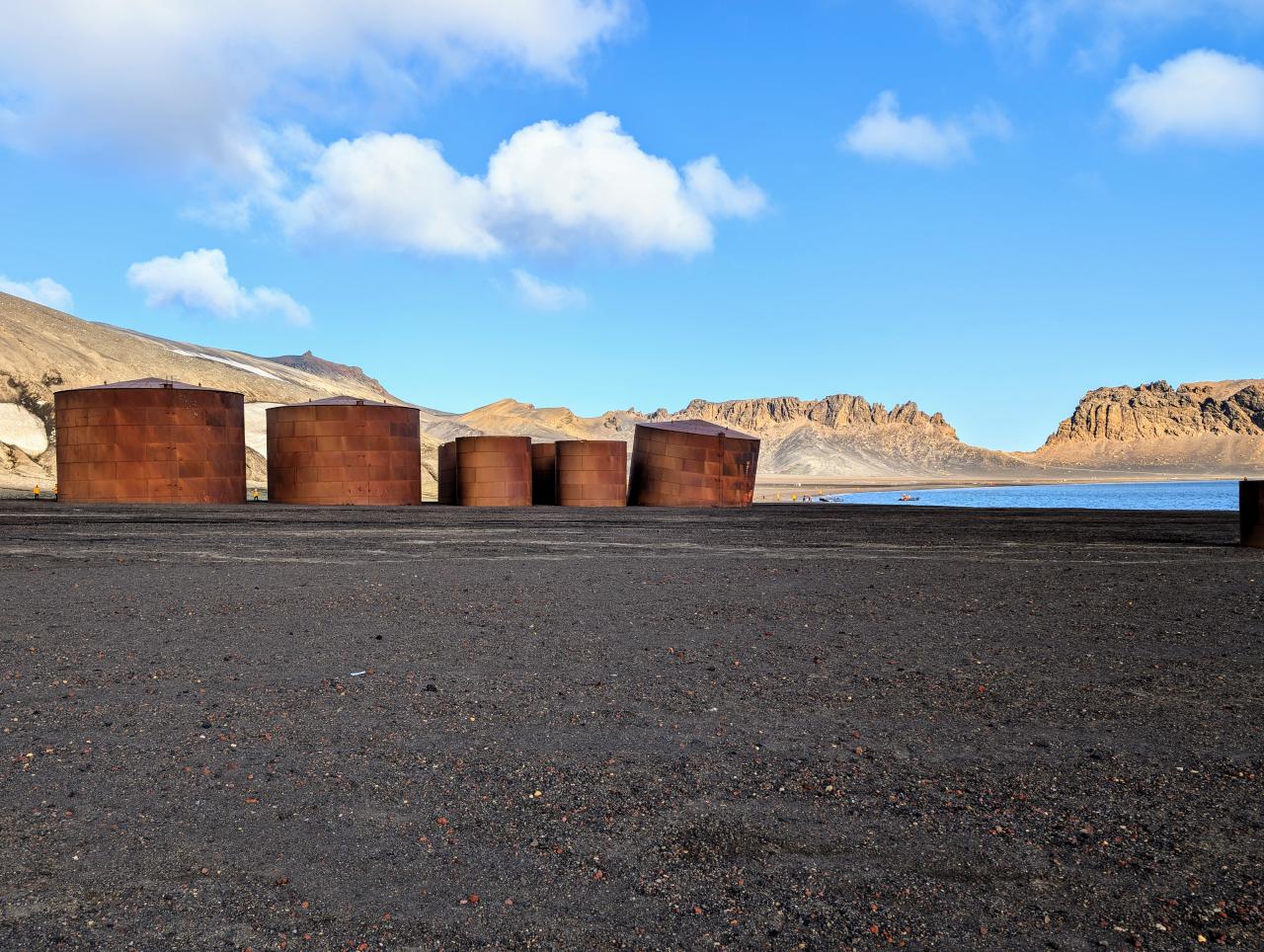
The black, volcanic sands of Deception Island
The water just below the surface of the sand was minerally and warm to the touch, heated to a pleasant 40ºC by the volcanic activity far below the surface. But the air was cold and the wind was sharp. We spent a brief 30 minutes exploring the dilapidated whaling station buildings and rusted structures before taking another zodiac back to the ship where a hot shower awaited.
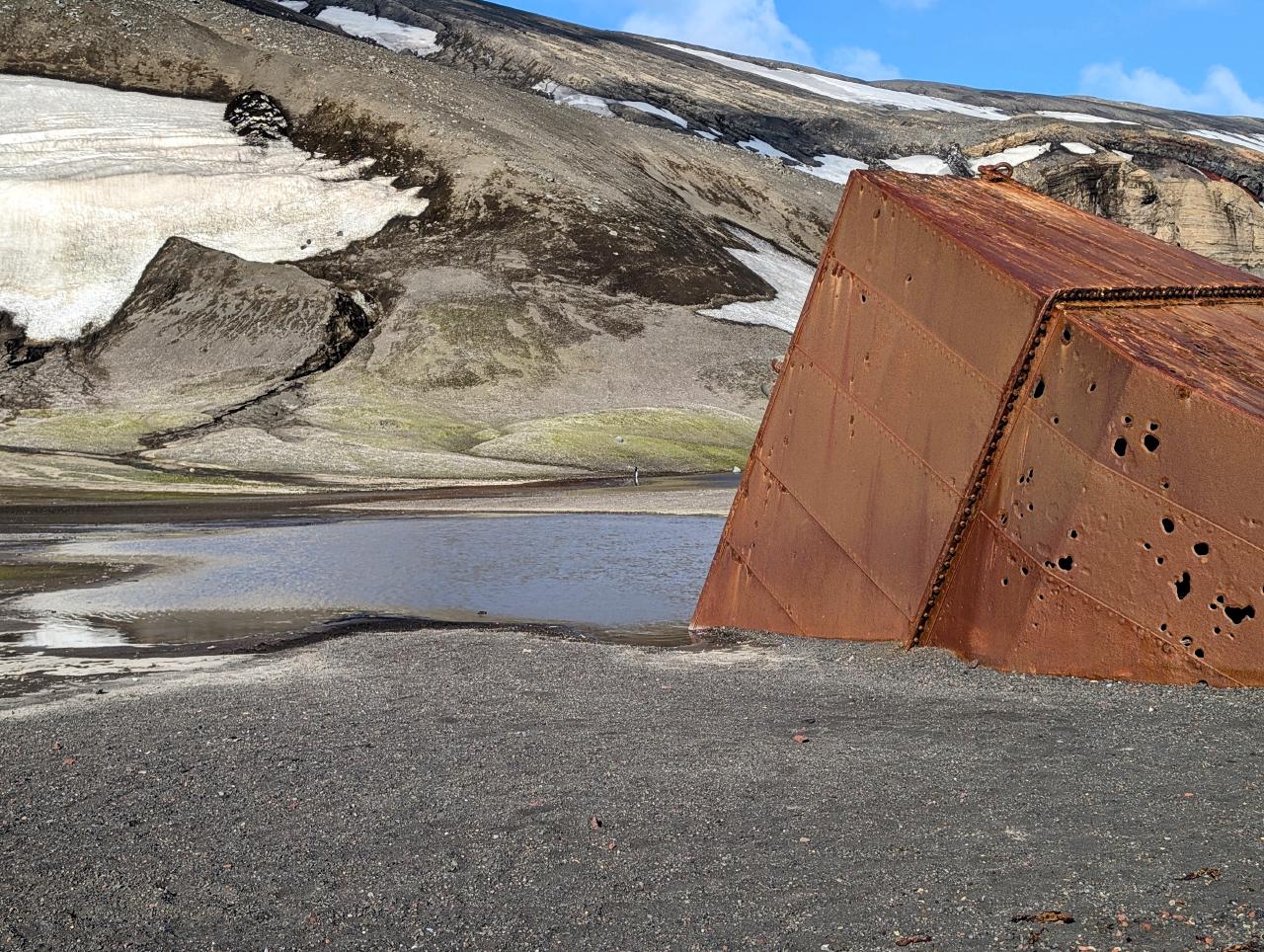
Rusted storage and machinery equipment from the whaling industry on Deception Island
That evening, we commenced our journey north, back to Ushuaia, across the Drake Passage.
21 - 23 January, At sea
Our captain informed us that we had the calmest crossing of the Drake that he had ever experienced. A dense fog hung above the smooth, lake-like ocean, obscuring anything beyond the very immediate vicinity of the ship. We glided through with ease, and therefore enjoyed two very calm sea days, making the most of the gym and sauna and catching up on some much-needed sleep.
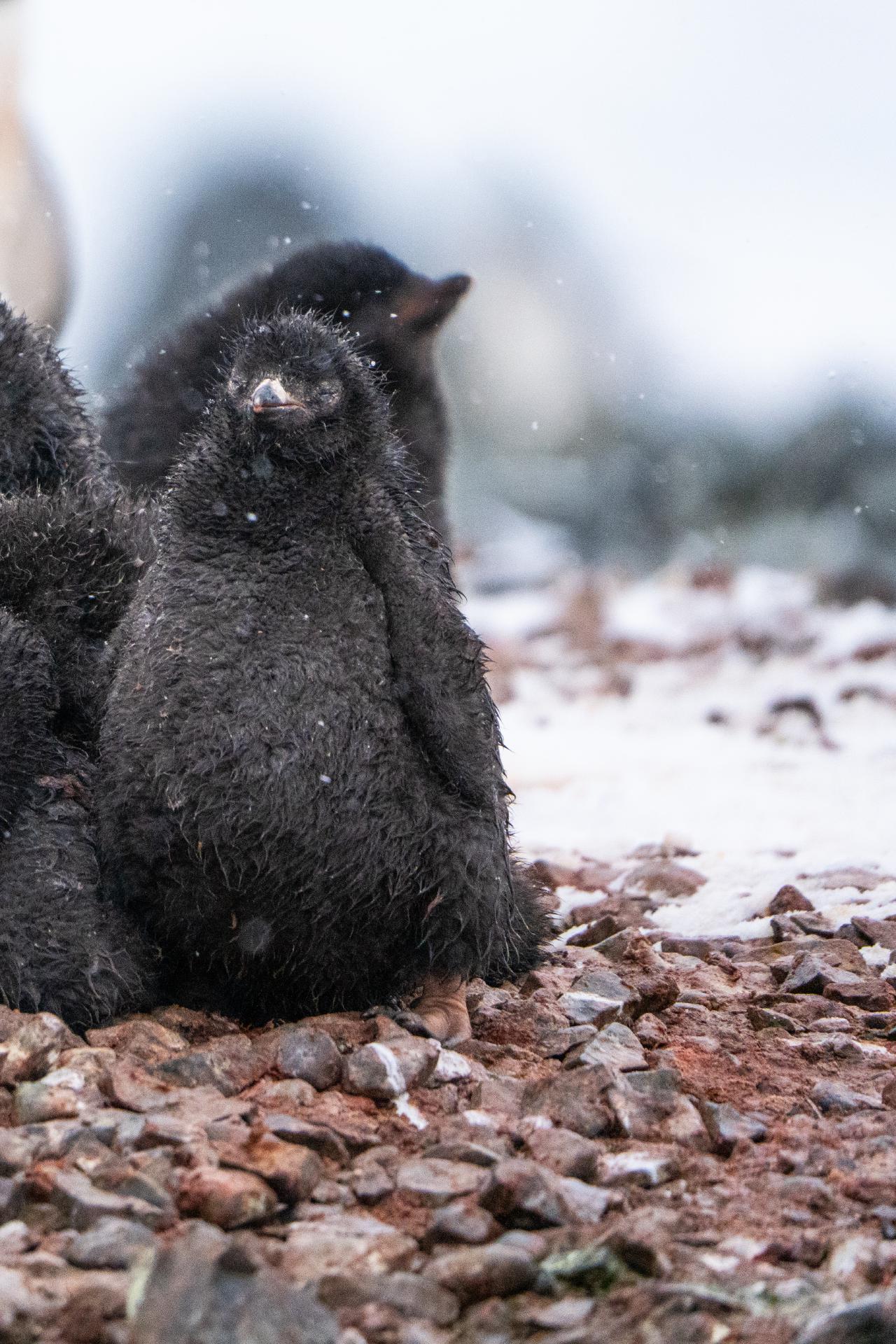
A little bit like this penguin chick
We also received a tour of the ship’s bridge. The spacious control centre was far larger than we anticipated and felt something like being on a spaceship. We learnt about the navigation and control systems as well as some unexpected items, like the store of some 30-odd signal flags that can be used to convey all sorts of messages. We were stragglers in the very last of the tour groups and so got invited to sit on the captain’s chair. Dylan took full advantage.
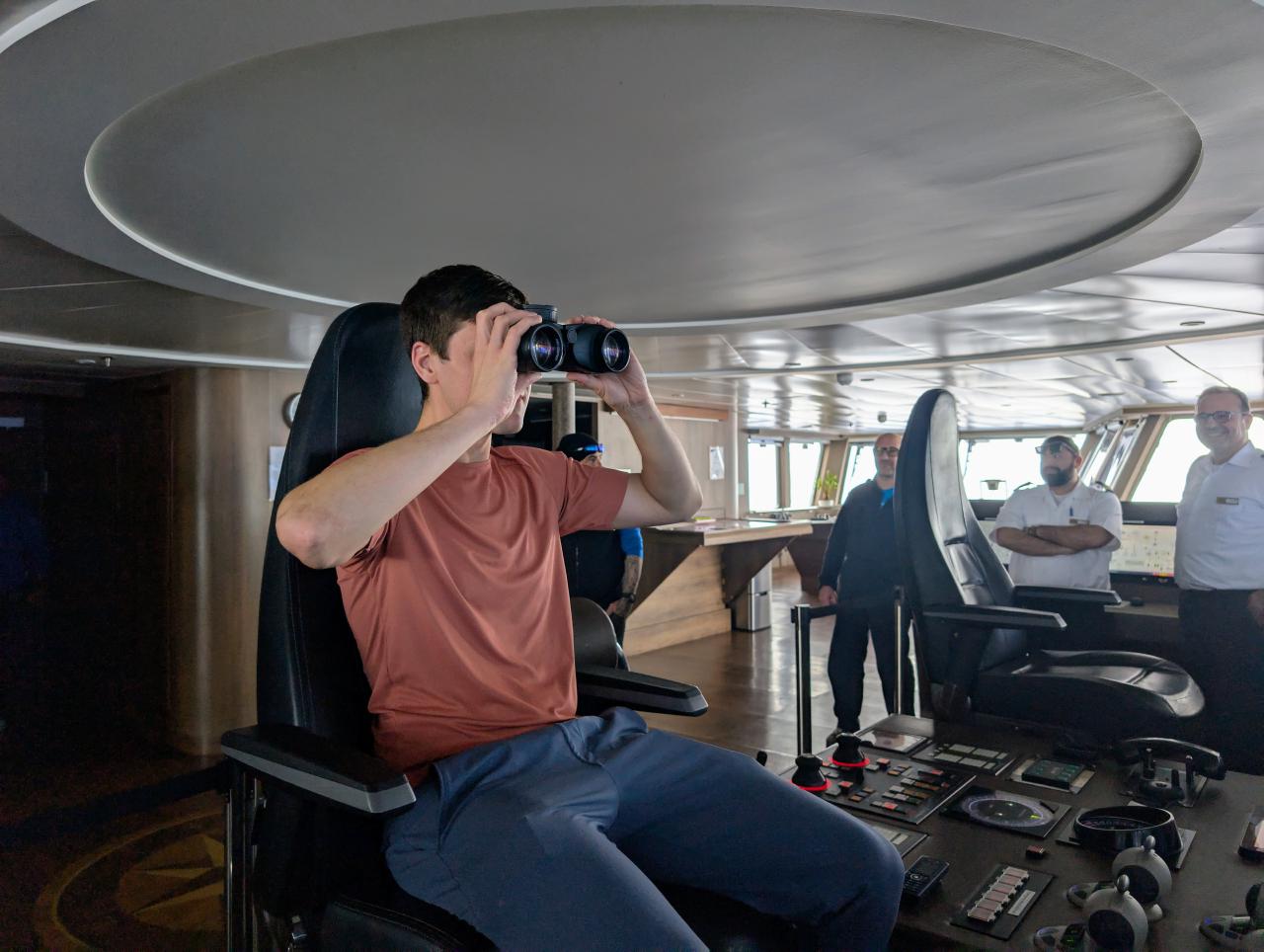
Dylan taking charge on the bridge
On the second last evening of our trip, the expedition crew hosted a fundraising auction for the South Georgia Heritage Trust and Penguin Watch. Most of the items went for a steep price, but I somehow found myself in the auspicious position as winning bidder on a beautiful print of Shackleton’s grave at South Georgia. At only £50, it was the lowest winning bid by far and I was pleased to be able to go home with a memorable keepsake from our trip, with the funds going towards supporting the wonderful work of the South Georgia Heritage Trust in rehabilitating the unique wilderness of South Georgia.
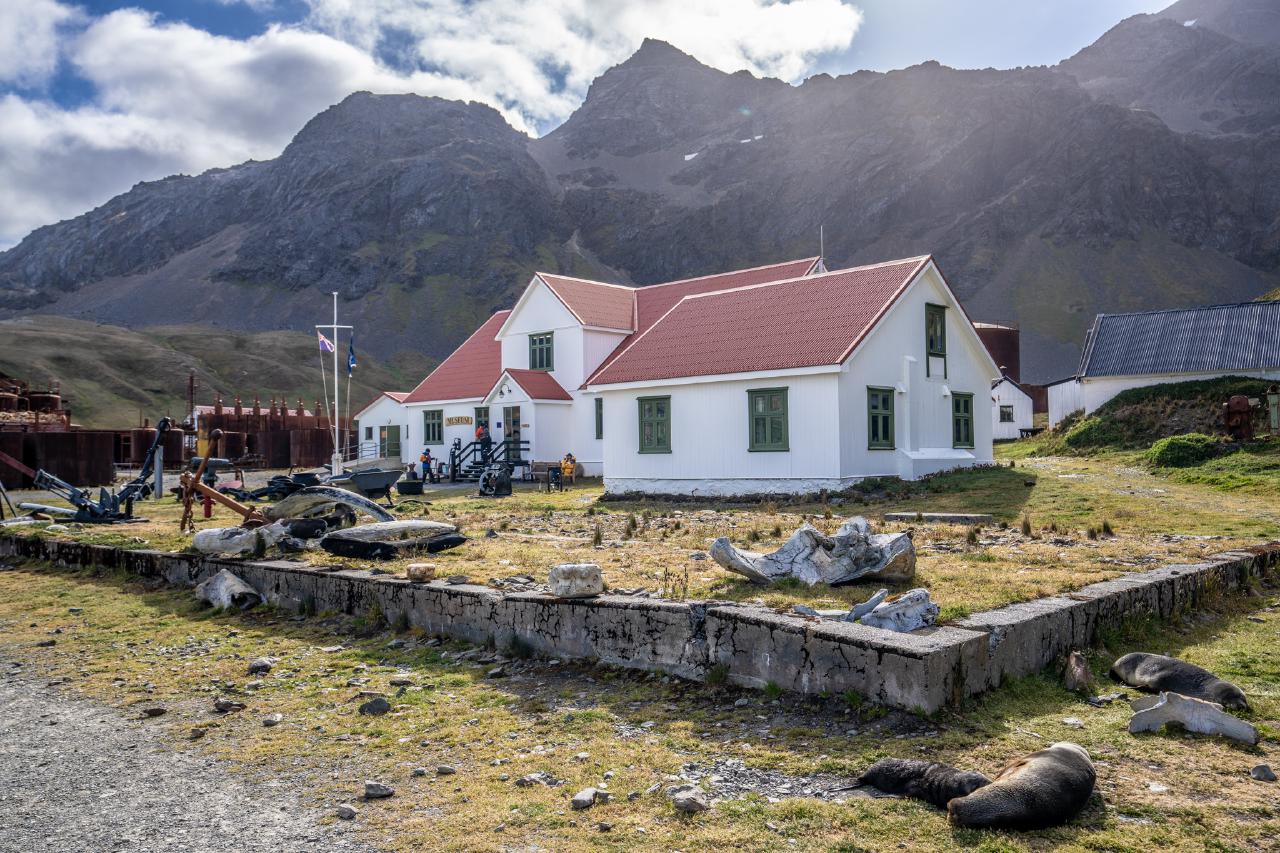
The South Georgia Heritage Trust building at Grytviken
We pulled into the Beagle Channel around midnight, and the loud shuddering at 2am told us a pilot had joined the ship. The World Explorer continued down the passage through the early hours of the morning while we slept.
We woke at 6.00am to begin the disembarkation process, leaving our floating home and expedition behind.

The World Explorer
Firmly back on land, in the summer warmth of the higher latitudes of Santiago, I’m completing this blog and reflecting on our Antarctic experience.
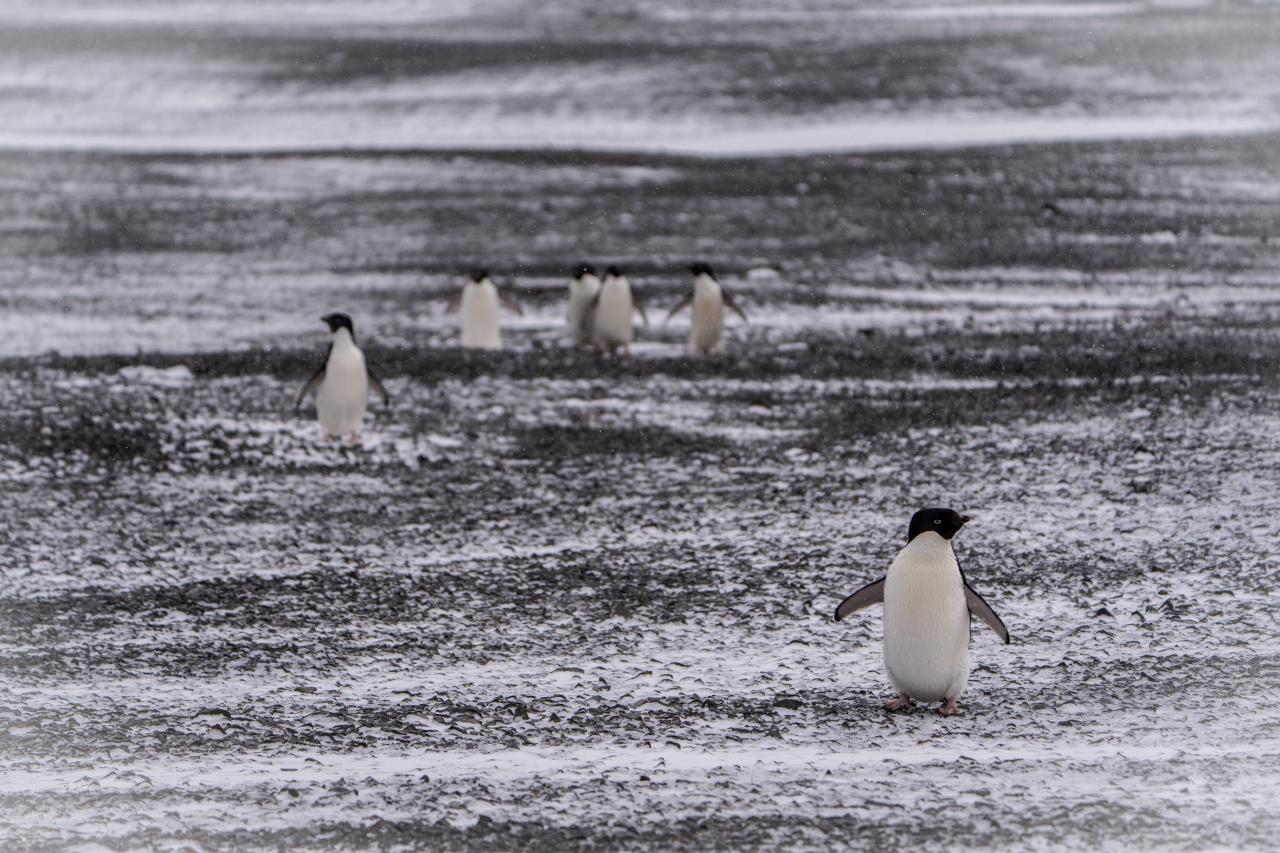
Antarctica is often touted as the last untouched place on earth. But that is not true. Humans have been exploring, conquering, exploiting and living on the continent for over 200 years. Millions of seals, penguins and whales were taken during the nineteenth century and driven to the brink of extinction by the twentieth. With the cessation of these practices, and establishment of protected areas, there are positive signs of recovery. But our ongoing presence for science and fishing, the rapid growth in tourism, as well as changing climatic pressures on temperature and sea ice, continue to burden the vast, white continent.
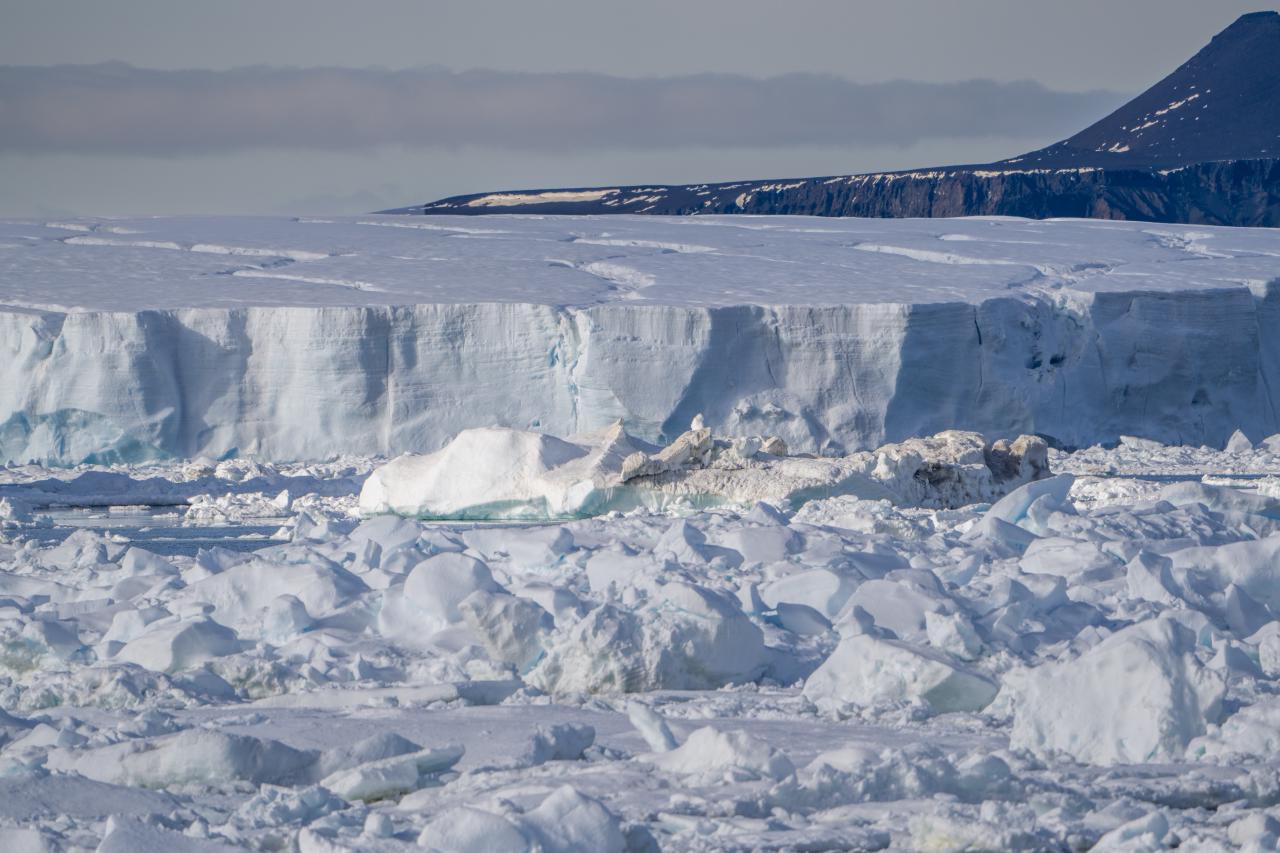
It is not an untouched wilderness, but it is wild. And like any biologically significant place on earth with a high concentration of wildlife, it deserves protection and preservation.
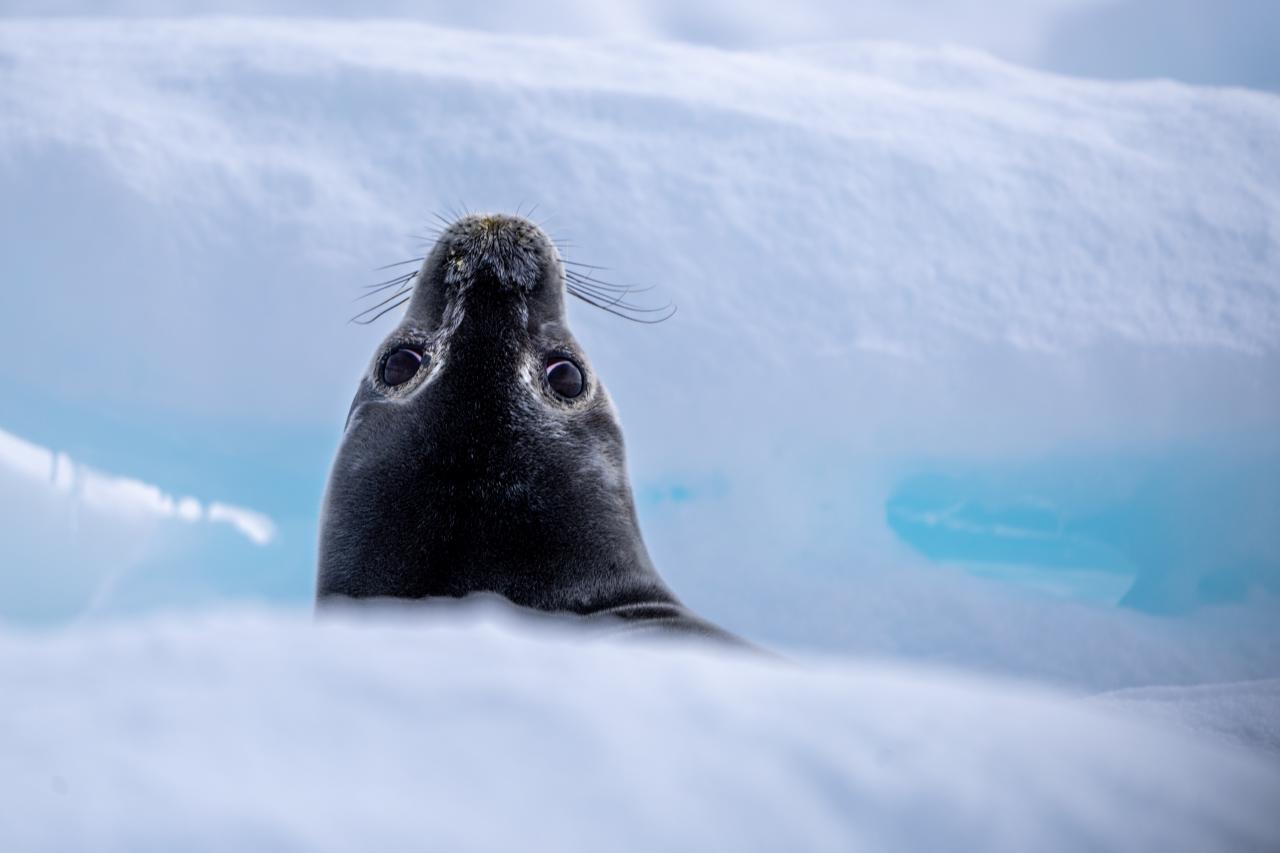
Antarctica is fragile and simply stunning. And its beauty alone is worth protecting.
